Recent Water Damage Posts
Most Common Appliance Leaks That Cause Water Damage
1/16/2024 (Permalink)
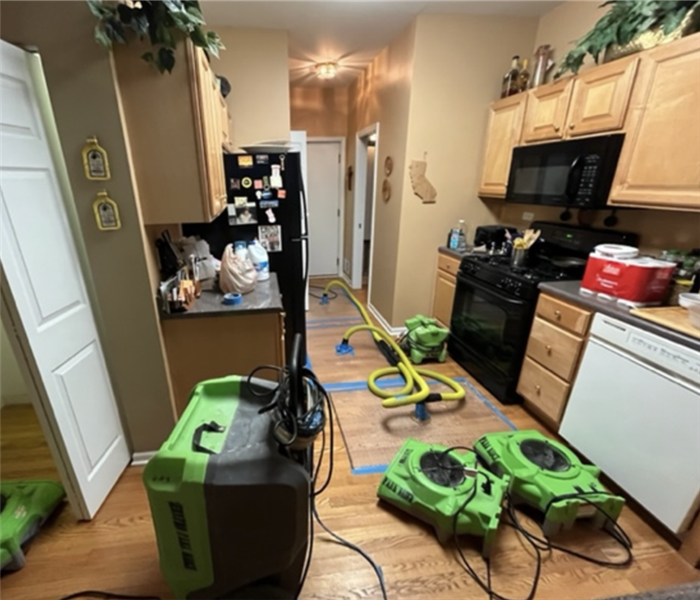 Water damage resulting from appliance leaks is a common issue that homeowners face.
Water damage resulting from appliance leaks is a common issue that homeowners face.
Water damage resulting from appliance leaks is a common issue that homeowners face. Often, these leaks can go unnoticed until significant damage has occurred. Understanding the common sources of appliance leaks is crucial in preventing potential water damage. In this blog, we'll highlight common household appliances prone to leaks that can lead to water damage and how to address them proactively.
1. Refrigerator
Refrigerator leaks commonly stem from malfunctioning ice makers, damaged water supply lines, or clogged defrost drains. Water pooling beneath or around the refrigerator could indicate these issues. Regularly inspect water supply lines for wear or leaks, and clear any blockages in the defrost drain to prevent water backup.
2. Washing Machine
Leaks from washing machines often occur due to damaged hoses, loose connections, or worn-out seals. Check hoses for cracks or bulges and replace them every few years. Ensure proper installation and tight connections to prevent water seepage. Periodically clean the lint filter to prevent clogs that may cause leaks.
3. Dishwasher
Dishwasher leaks commonly arise from damaged door seals, loose or worn-out gaskets, or faulty connections. Inspect the door gasket for any signs of wear or damage and replace it if necessary. Check hose connections and tighten them to prevent water leaks. Regularly clean the dishwasher filter to avoid blockages.
4. Water Heater
Water heater leaks can occur due to corrosion, loose connections, or a faulty pressure relief valve. Inspect the tank for signs of rust or corrosion and promptly address any issues. Regularly test the pressure relief valve and ensure proper functioning. A professional inspection of the water heater annually can help identify potential leaks.
5. Air Conditioning Unit
Condensation from the air conditioning unit can lead to leaks if drain lines become clogged or damaged. Check the drain lines for blockages and clear them regularly to prevent water backup. Ensure proper installation and regular maintenance of the AC unit to avoid condensation-related leaks.
Preventive Measures to Mitigate Appliance Leaks
- Perform routine inspections of appliances and their connections for any signs of wear or damage.
- Replace hoses, gaskets, and seals periodically to maintain their integrity.
- Routinely clean filters and drains to prevent clogs and backups that could lead to leaks.
- Consider professional maintenance and inspections for appliances annually to identify potential issues early.
Addressing appliance leaks promptly can prevent extensive water damage to your home. Regular maintenance, inspections, and proactive measures are key to mitigating the risks associated with common appliance leaks. Remember, if you notice any signs of leaks or water damage, it's crucial to take immediate action to prevent further damage and seek professional help if needed.
At SERVPRO of Park Ridge/ N. Rosemont & S. Des Plaines, we specialize in water damage restoration and mitigation. Contact us for expert assistance in addressing water damage caused by appliance leaks and restoring your home to its pre-damage condition!
Caring for Your Home: Preventing Water Damage from Appliances
10/8/2023 (Permalink)
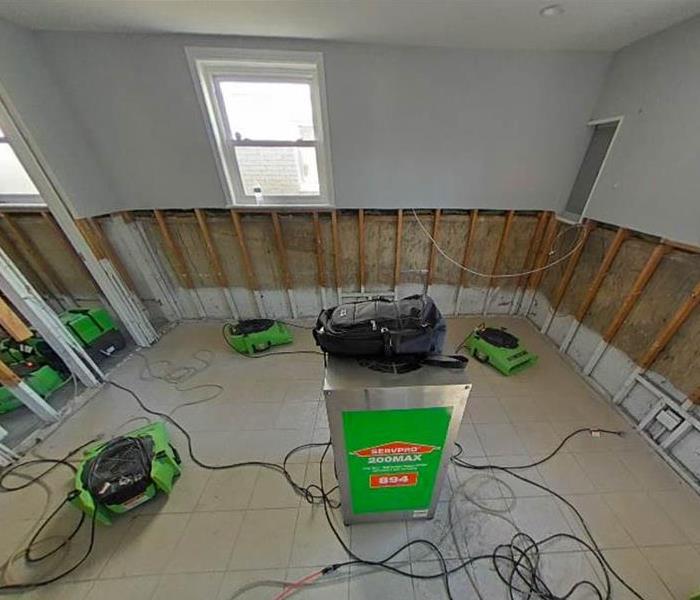 Water damage from appliances can be a disruptive and costly issue in your home.
Water damage from appliances can be a disruptive and costly issue in your home.
While appliances like washing machines and dishwashers make our lives more convenient, they can also pose a hidden risk – water damage. Here in Illinois, water damage from appliances is a common issue, and it often catches homeowners off guard. In this blog, we'll delve into the potential sources of water damage from appliances and provide essential tips to help you prevent and address these issues effectively.
Understanding the Risk: Where Does It Come From?
Washing Machines: These workhorses of the laundry room can sometimes malfunction, causing water to leak from hoses, pumps, or even the machine itself. Over time, wear and tear can lead to cracks or loose connections.
Dishwashers: Leaks from dishwashers often occur at the hose connections, door gaskets, or pump seals. A malfunctioning float switch can also result in overfilling and subsequent water damage.
Refrigerators: If your fridge has a water dispenser or ice maker, it's connected to your home's water supply. A damaged or loose water line can lead to slow leaks, which can go unnoticed for some time.
Preventing Appliance-Related Water Damage
Regular Maintenance: Inspect hoses, connections, and seals on your appliances regularly. Replace any damaged or aging components promptly. Consider upgrading to steel-braided hoses, which are more durable than standard rubber ones.
Install Water Leak Detectors: These affordable devices can alert you to water leaks, even when you're away from home. Some can automatically shut off the water supply if a leak is detected.
Check for Signs: Be vigilant for signs of water damage, such as water spots, dampness, or musty odors around appliances. Address any issues promptly to prevent further damage.
What to Do When Water Damage Occurs
Turn Off the Water: If you notice a water leak from an appliance, shut off the water supply to that appliance immediately to prevent further damage.
Call SERVPRO: Our skilled professionals in Illinois are experts in water damage restoration. We'll assess the extent of the damage, extract excess water, and thoroughly dry and dehumidify the affected area.
Content Restoration: We also specialize in content restoration. If your belongings have been damaged by water, we can help restore them to their pre-damage condition.
Water damage from appliances can be a disruptive and costly issue in your Illinois home. By staying vigilant, performing regular maintenance, and taking swift action when water damage occurs, you can protect your property and keep your home safe and dry. If you ever find yourself facing water damage from appliances or any other source, don't hesitate to reach out to SERVPRO of Park Ridge/N. Rosemont & S. Des Plaines. We're here to help Illinois residents restore their properties to their pre-damage condition quickly and efficiently.
Help! My Dishwasher is Leaking
7/27/2023 (Permalink)
A leaking dishwasher can be a frustrating and potentially damaging problem in your kitchen. Whether you notice a small puddle or a steady stream of water, addressing the issue promptly is crucial to prevent further damage to your flooring and cabinets. In this blog post, we will guide you through the steps to take when your dishwasher starts leaking, helping you resolve the issue and restore the functionality of your appliance.
Shut Off the Power and Water
As soon as you notice the dishwasher leaking, turn off the power supply to the appliance. Locate the circuit breaker for your dishwasher and switch it off to eliminate the risk of electrical shock. Next, locate the water supply valve under the kitchen sink or near the dishwasher and shut it off to stop the water flow.
Inspect for Obvious Causes
Before proceeding with further troubleshooting, visually inspect the dishwasher for any obvious causes of the leak. Check the door gasket or seal for tears, cracks, or misalignment. Ensure that the dishwasher door is closing properly and that no objects or debris obstruct the door's complete closure. Additionally, examine the dishwasher's hoses and connections for any signs of leakage or disconnection.
Clean and Unclog the Drain
A clogged drain can cause water to back up and leak from your dishwasher. Remove the bottom rack and inspect the drain area for any food particles, debris, or hard water deposits. Clear away any obstructions using a brush or toothpick and rinse the area with warm water. This simple step can often resolve minor drainage issues.
Check the Float Switch and Float Assembly
The float switch and float assembly are safety mechanisms that prevent overfilling in the dishwasher. Inspect these components for any blockages or malfunctions. Gently move the float up and down to ensure it moves freely and is not stuck in the raised position. If the float switch is faulty, it may need to be replaced by a professional.
Examine the Dishwasher's Seals and Gaskets
The door seal and gaskets play a crucial role in preventing water from leaking out of the dishwasher. Inspect these components for any signs of damage, wear, or debris accumulation. Clean the seals and gaskets using a mild detergent and warm water, removing any food particles or residue that may interfere with a proper seal.
Test for Leakage
After performing the above steps, turn the water supply back on and run a short cycle on your dishwasher while closely monitoring for any signs of leakage. Use a flashlight to inspect the areas around the door, hoses, and connections. If the leak persists, it may be necessary to call a professional dishwasher repair service to diagnose and resolve the issue.
Contact a Professional Repair Service
If your troubleshooting efforts do not resolve the leakage problem, it's advisable to contact a professional dishwasher repair service. Trained technicians have the expertise to diagnose complex issues and safely repair or replace faulty components. They can also provide guidance on whether it's more cost-effective to repair the dishwasher or consider a replacement.
Dealing with a leaking dishwasher can be a hassle, but by following these steps, you can effectively address the issue and prevent further water damage in your kitchen. Remember to prioritize safety by shutting off the power and water supply before inspecting and troubleshooting the appliance. If the leak persists or you're unsure about performing repairs yourself, it's best to seek the assistance of a professional dishwasher repair service. With their expertise, your dishwasher will be back in working order, and you can enjoy clean and dry dishes once again.
How To File Water Damage Insurance Claims
2/10/2023 (Permalink)
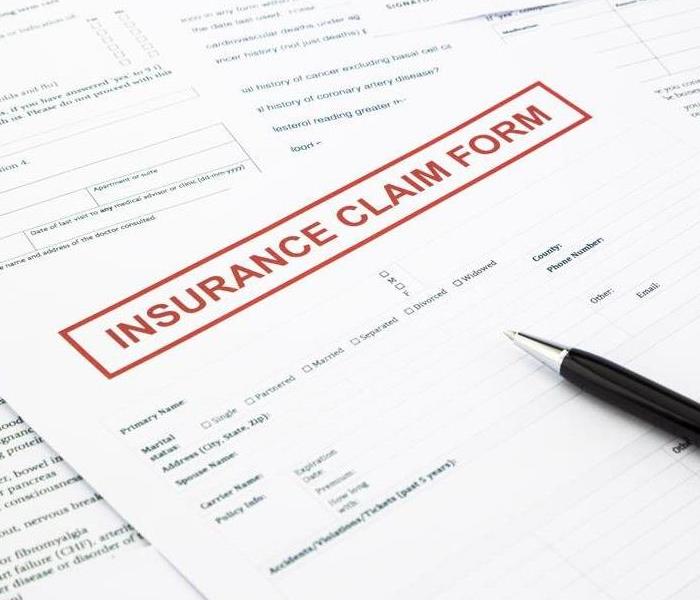 Insurance is important to have incase of a water damage.
Insurance is important to have incase of a water damage.
Water damage is one of the most common causes of insurance claims. Water damage can also result in significant damage to your property as well as mold growth if not properly cleaned up immediately. That’s why understanding how to file a home insurance claim for water damage is so important: knowing what coverage you have on hand can help you make better decisions about filing an insurance claim if disaster strikes.
What is a water-damage claim?
Water damage is a common cause of home insurance claims. It can be caused by a number of things, including burst pipes and overflowing bathtubs. Even hurricanes can cause water damage if they flood your house with rainwater or wind-blown waves that come in through windows or doors.
If you have suffered any type of water damage to your property, it's important that you file an official claim with your insurer so they know exactly what happened and how much money they have to pay out as compensation for repairs or replacement costs.
Contact your insurance carrier.
As soon as you notice the water loss, the first step is to contact your insurance. Be ready to provide them with as much information as possible, such as your policy number. The insurance agent will open the claim and guide you through the next steps.
Fill out and submit claim forms.
Next, your insurance carrier will provide you with the necessary forms to fill out. It is important to fill out the forms with as much detail as possible.
You can submit your claim through an insurance company's website, by mail, or by phone. If filing online, make sure that all fields are filled out accurately before submitting so that no further action is necessary on your part once they receive the forms!
Make temporary repairs
It is important to make temporary repairs as soon as possible. These repairs will help prevent further damage and can be done by you or a contractor.
If you do not know how to make the necessary repairs, contact your insurance company. They will provide you with a list of contractors who are insured and qualified to perform water damage restoration services in your area.
Provide documentation.
In order to receive the proper compensation from your claim, you'll need to provide documentation. You should provide receipts for materials and services used, repair estimates, and pictures of the damage. Pictures of your property before and after the water damage will also be helpful in filing your claim. When working with a restoration company such as SERVPRO, they can take care of the entire claims process for you, including providing detailed documentation of the damage before, during, and after the repairs.
Call a Water Restoration Company
Once you have a claim number and the details of your claim, it's time to get started on repairs. The first step is hiring a company that specializes in cleaning up water damage and restoring the property. You can find these companies through an internet search or by asking your insurance carrier for a referral.
Wait for the insurance adjuster and final approval.
The insurance adjuster will review your claim once it is completed. They will make sure that they were provided with all the necessary information to process your claim. They will most likely send an insurance adjuster to your home to evaluate the damage and create an estimate of the cost involved in mitigating and restoring the damage. Once approved, the insurance company will send you a check for the estimated cost of repairing your home.
If you're unsure about whether or not your home insurance covers water damage, it's always a good idea to call your agent. They can help you understand how this type of claim works and what steps need to be taken. You should also contact your insurance company immediately after any incident where there is water damage so that they can start processing your claim as soon as possible.
What Do I Do If I Have A Burst Pipe In My Home?
11/3/2022 (Permalink)
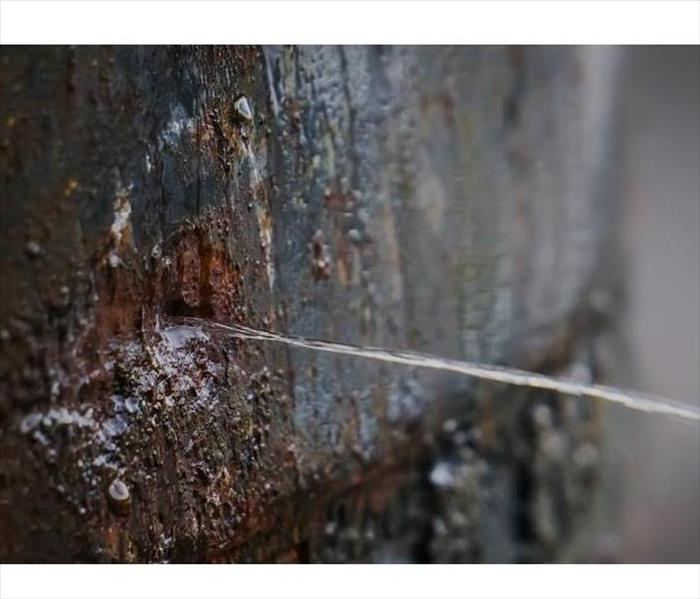 When you have a burst pipe in your Des Plaines, IL home, it’s not just an inconvenience—it’s a disaster.
When you have a burst pipe in your Des Plaines, IL home, it’s not just an inconvenience—it’s a disaster.
What Do I Do If I Have A Burst Pipe In My Home?
When you have a burst pipe in your home, it’s not just an inconvenience—it’s a disaster. Not only do you have to deal with the mess and damage that comes with flooding, but you also have to figure out how to get water damage repaired before mold can set in.
Here are some tips for what to do if you have a burst pipe in your home:
Turn off the water to your home.
The first thing you want to do is shut off the main water supply. This can be done by turning the valve on your water meter, which will stop the flow of water immediately. Make sure it's off before doing anything else.
Next, you'll want to turn off any electricity in the room where your burst pipe is located and/or shut off power to that breaker box entirely if necessary. This means no lights, no refrigerators or freezers (if they're located near where the pipe burst), no stoves or microwaves, no washers or dryers—basically anything that uses electricity should be turned off until certified professionals have dealt with it properly and deemed them safe for use again.
Remove your pets or children from the area.
If you have children or pets, it's important to protect them from any potential damage. There are many dangers associated with burst pipes that can cause harm to animals as well as tiny humans, so it's best to keep them out of the way while you deal with the situation.
Drain faucets.
The next step you will want to take is to drain the remaining faucets in your home or business. This will drain water out of the pipes and minimize the chances of further damage caused by flooding.
You should also check all of your faucets to ensure that they are not leaking, as this will increase the amount of water that is lost and could cause additional damage to your property.
Call a water damage restoration company.
If you have a burst pipe in your home, the first thing to do is call a plumber. You should then call a water damage restoration company. If you don't know who to call, or if the situation is too complicated for you to handle on your own, just call someone who can help with this type of problem.
There are many reasons why it's important not to try fixing something yourself when there's an issue with your plumbing system:
- You might cause further damage by trying to fix it yourself
- It could be very hard for you (or anyone) without professional training and equipment
Keep an eye out for mold.
When a pipe bursts, it's important to keep an eye out for mold. If you have had a burst pipe in your home, then you should be aware that mold is likely to form in the affected area. In fact, mold can grow within 24 hours of a water leak—and this can pose serious risks if left untreated.
If you contact a restoration company, they will take necessary precautions to ensure that you do not have a mold infestation break out in your home or business.
If you have a burst pipe in your Des Plaines, IL, home, it's important to take action quickly. Don't delay when dealing with burst pipes—the longer you wait, the more water damage will happen and the bigger your bill will be. But don't worry! We're here to help. We know from experience that this type of emergency can be stressful and overwhelming, but if you follow our advice above, we're confident that everything will turn out all right.
3 Reasons To Carry Business Insurance
6/20/2022 (Permalink)
 Business insurance allows you to take control of the business you have been working so hard to maintain.
Business insurance allows you to take control of the business you have been working so hard to maintain.
Three Reasons to Insure Your Business
Even if your business in Rosemont, IL, is doing great, risks are always present. A simple mistake could lead to a costly lawsuit. A storm could knock out a window in your building and damage sensitive equipment. Theft and vandalism could happen at any time.
Business owners account for these risks by purchasing various types of business insurance. Some common types include commercial property, liability, auto, and workers' compensation.
Businesses in different industries may face different types of risks, but all businesses should carry some kind of business insurance.
Here are some of the main reasons to make sure your business has coverage.
1. Protect Commercial Property From Water Damage and Other Events
Water damage to commercial property can stem from a variety of sources:
- Plumbing issues and broken pipes
- Heavy storms
- Leaky HVAC systems
- Damaged irrigation systems
You cannot predict when any of these events might occur, so it is important to have a commercial property insurance plan that covers water damage.
To address disasters associated with water or fire damage, be sure to contact a professional restoration company as soon as possible. Water cleanup is often covered by commercial property insurance, and professional services will help your business recover more quickly.
2. Avoid Expensive Out-of-Pocket Costs
If your business experiences an event for which you do not have insurance coverage, you will have to pay the full cost yourself. Depending on the severity of the incident, this could be financially devastating. Insurance allows you to soften the blow.
3. Move Forward With Confidence
Life can throw a lot of things at your business, and you want to make sure you are ready. If you have not yet conducted detailed risk analysis projects, there may be dangers that you have not accounted for.
Business insurance allows you to take control of the business you have been working so hard to maintain. Risk management is an important part of any solid business plan.
A Plan of Action for When Your Kitchen Sink Floods
2/12/2022 (Permalink)
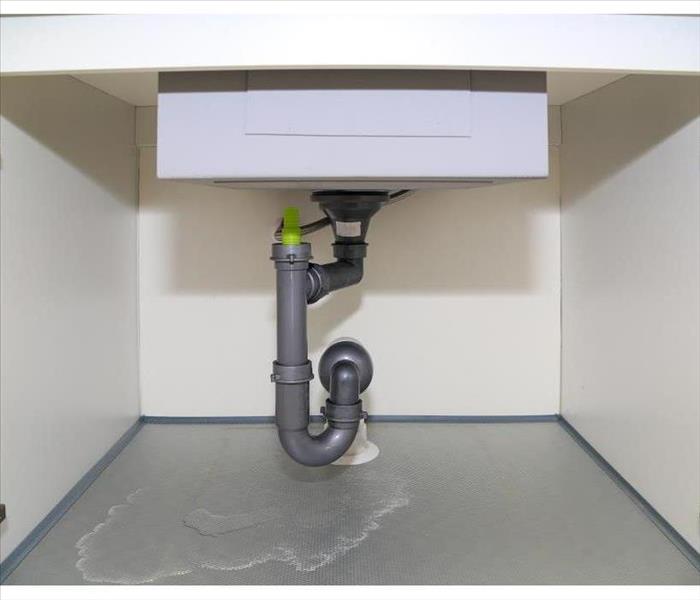 When your home requires water damage repair and restoration, our crew is here to help! We're standing by 24/7 to respond to your emergency.
When your home requires water damage repair and restoration, our crew is here to help! We're standing by 24/7 to respond to your emergency.
When Your Kitchen Sink Overflows, Have A Plan
There are few things people dread more than finding a leak under the kitchen sink. Whether it be a slow leak or a burst pipe, flooding of any form can very quickly cause serious damage if not taken care of quickly. If you have a leak in your home in Park Ridge,IL, follow these steps to help minimize damage.
1. Shut Off the Water
There can be many signs of a leaking sink; these may include a pool of water under the sink or water spilling out of cupboards onto the floor. Your first priority as soon as you spot a leak is to shut your water off. Find your water main and turn it off immediately. Always make sure when you move to a new house that you know where the water main is in case of emergencies. Shutting your water off as soon as possible can help prevent further damage from flooding and water in the home.
2. Call Your Insurance Company
Once you have shut off the water, your next step is going to be to call your home insurance company, which can then open a claim and offer assistance throughout the process. Water leaks can cause major damage that can require kitchen repair. Your insurance company can ensure the correct steps are taken to help you get the problem fixed.
3. Call a Restoration Company
Your last step should be to call a restoration company. These companies specialize in water damage repair. Restoration companies are professionals when it comes to floods and can aid in minimizing the damage caused by leaks. The sooner you can bring in the professionals, the better.
Whether you’re flooding or leaking, at the first sign of water under your kitchen sink, follow these steps to quickly and efficiently get your problems resolved. Having a plan in place in case of emergencies, such as a leaking sink, can allow you to act promptly and avoid further damage.
What To Do If You Have Damaged Building Materials
2/1/2022 (Permalink)
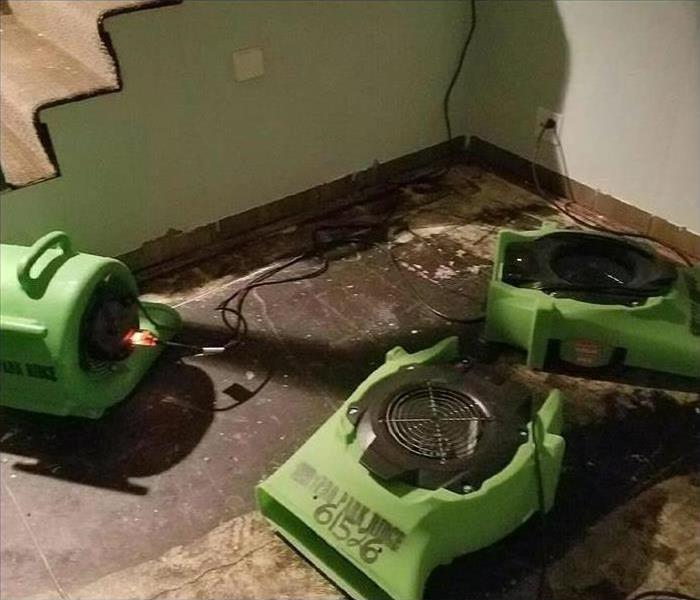 It is critical that the water does not sit for too long as it can start to cause secondary damage. call SERVPRO, we can help you.
It is critical that the water does not sit for too long as it can start to cause secondary damage. call SERVPRO, we can help you.
What Should You Do If Your Building Materials Have Been Damaged?
If you have water damage like swelling wood in your home in Chicago,IL, you might be wondering what your next step should be. In some cases, building materials will need to be replaced. Depending on the extent of the damage, however, you may be able to save some of the wet materials. If your home has been damaged, here are some steps you can take to begin restoration.
1. Make Needed Repairs
In order to prevent any further damage, a water pipe repair might be necessary. Be sure to have this done before you begin work on repairing or replacing any building materials. If you begin replacing materials before addressing the source of the problem, you will only be wasting your time.
2. Determine the Amount of Damage
Not all damaged materials need to be treated in the same way. If a supply line in your home has broken, the water will likely have caused more damage to areas closer to the line than those further away. If this is the case, only some of the materials will need to be replaced.
3. Replace Materials With Extensive Damage
Any materials close to the source of damage will more than likely need to be replaced. For example, if the supply line underneath your kitchen sink has broken, your cabinets may have swelling wood that cannot be repaired. The subfloor underneath may also need to be replaced.
4. Allow Materials With Light Damage To Dry
For materials that haven’t suffered significant damage, allowing them to dry might be sufficient. Some types of wood, as well as drywall, can be saved, depending on how much water damage has been done. Using a humidifier can help with this.
In case of damage to your home, it is a good idea to use water damage repair services. They can help you determine how much of the area needs to be repaired and can replace any swelling wood or ruined materials.
What To Expect From Your Insurance Company After a Broken Pipe
1/5/2022 (Permalink)
 Your claim will likely be denied if it appears that the water damage was caused by not fixing an existing problem.
Your claim will likely be denied if it appears that the water damage was caused by not fixing an existing problem.
After A Pipe Break, What Should You Expect From Your Insurance Company?
You walk into your kitchen and step into an inch of standing water. Upon quick inspection, you discover that a broken pipe under the sink is the cause of the flood. Your mind automatically starts figuring how much this is going to cost. Will your insurance policy cover part of it, and if so, how much?
Likely Coverage
Your insurance company probably considers plumbing repair to be part of regular home maintenance. Therefore, not many insurance policies will cover the cost to fix a broken pipe. However, the water damage that occurs as a result of the leak is a different story. Most homeowners’ policies cover water damage to:
- Flooring, including tiles and carpet
- Cabinets
- Walls
- Ceilings
Your insurance adjuster in Rosemont,IL, knows that water damage only gets worse the longer it stands. The company has a vested interest, therefore, in making sure you have the means to fix problems caused by the flood as soon as possible.
Possible Denial
While your insurance coverage should take care of the damage to your home, there are certain instances where your claim could be denied. If the water volume is significant and rises quickly, the damage is probably too great to be covered by a standard property policy. You may need to depend on your separate policy designed specifically for flooding in that case. If the adjuster can tell that the damage was caused by a long-term leak that resulted in a broken pipe, or if the pipe broke as the result of improper heating or insulation around it, the insurance company may see this as neglect. Your claim is likely to be denied if it seems that the water damage was caused by your failure to fix an existing problem.
The key to getting your insurance claim accepted after a flood from a broken pipe is timely reporting. Call your agent, and then call water remediation specialists who can start repairs quickly.
How To Snake a Clogged Pipe
12/9/2021 (Permalink)
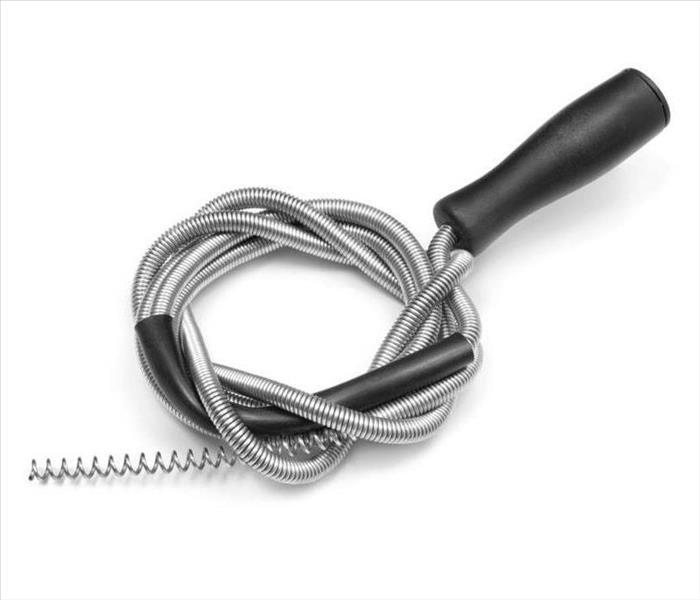 If you have a water damage in your home, you can trust SERVPRO, call us, we are always ready to respond.
If you have a water damage in your home, you can trust SERVPRO, call us, we are always ready to respond.
What Is The Best Way To Snake A Clogged Pipe?
An auger or snake can be used to clear clogged or stopped pipes. There are different snake designs for these purposes. In general, consumer-grade snakes are not as lengthy or powerful as professional augers. A homeowner should decide where to snake to clear out a blockage.
Pick an Access Point
There are several options for snaking out a drain. A homeowner can attempt to access a clog through a:
- Toilet
- Floor drain
- Drain cleanout
It may be easier to access a clog near a toilet through the floor drain. Remove the toilet and run the snake directly into the drain. The drain cleanout is usually located in a basement or crawlspace. Remove the cap with a long pipe wrench, and look out for sewage overflow.
Insert the Snake
Push the snake into the drain until you encounter resistance. This should be the cause of the clogged drain. At this point, it is necessary to penetrate the clog by:
- Hand-cranking
- Using a power drill attachment
- Breaking up or extracting the blockage
If you do not encounter resistance, the stoppage is located elsewhere. Contact a plumber to clear the line.
Test the Drainage
Try flushing a toilet and running a shower or sink to check for signs of overflow. If the pipe remains blocked, you may observe:
- Water backing up in the sink or shower
- The toilet overflowing while the shower is running
- The toilet gurgling or sputtering
- A sewer gas odor
A plumber can help to resolve the issue. In the meantime, try to limit sewer damage. Be aware that unequal pressure may result in a pipe break.
An auger or snake is more effective than a plunger. If a drain remains clogged after snaking, contact a plumber. If backups have caused sewer damage at a residence in Chicago,IL, a homeowner should contact a water damage cleanup and restoration company.
Everything You Need To Know About Toilet Overflows
12/2/2021 (Permalink)
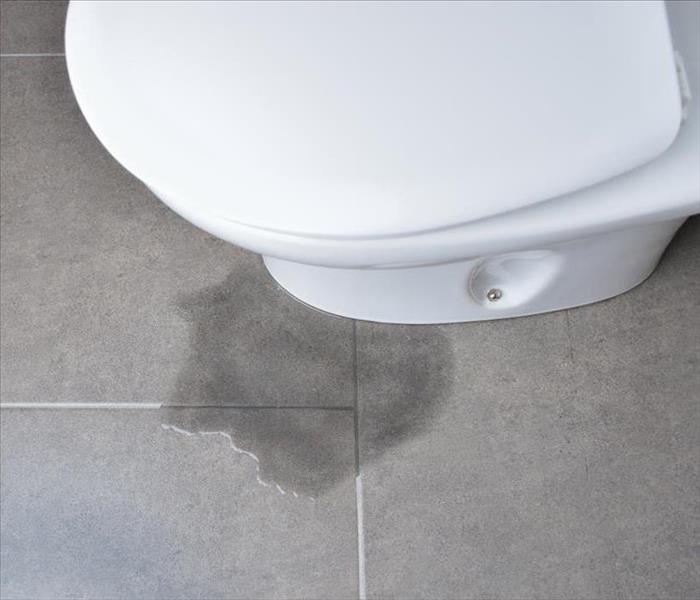 If you have sewer damage, toilet overflows may be common. As pipes age, they can deteriorate.
If you have sewer damage, toilet overflows may be common. As pipes age, they can deteriorate.
What You Should Know About Toilet Overflows
An overflowing toilet can be a disgusting mess. Still, flooded toilets in Park Ridge, IL, homes are a common occurrence. If you have water where water is not supposed to be, you need to think about more than general sewer damage. Here are three things you should do if you have a flooded toilet.
1. Stop the Flood
Generally, the longer you have standing water, the greater damage you can expect. Often, the best way to stop toilet flooding is to reach for the plunger. As such, if you do not keep a plunger in your bathroom, you may be asking for trouble. On the other hand, if water is coming from the top of the tank, you must stop the flood there. Simply depress the flapper or turn off the water supply.
2. Remove Standing Water
Water has a way of destroying drywall, subfloor, tile and carpeting. If you have an overflow, you must immediately remove standing water. Also, be sure you completely dry out the area to help discourage mold growth. If you have extensive damage or notice mold, you may not want to do the job yourself, however. By contracting with a reputable mold-removal service, you rely on technicians who have the equipment and expertise to restore your bathroom to its pre-flood condition.
3. Contact a Sewage Company
If you have sewer damage, toilet overflows may be common. As pipes age, they can deteriorate. Even worse, tree roots and deep clogs can destroy your home’s plumbing system. Rather than constantly wondering about the health of your pipes, consider asking a plumber to evaluate the overall health of your system.
To get the most out of your bathroom, you need to have a functioning toilet. A toilet that constantly overflows doesn’t do you much good. By understanding overflowing toilets and sewer damage, you can develop a strategy for keeping your bathroom dry.
When Should You Use Drain Cleaners?
11/10/2021 (Permalink)
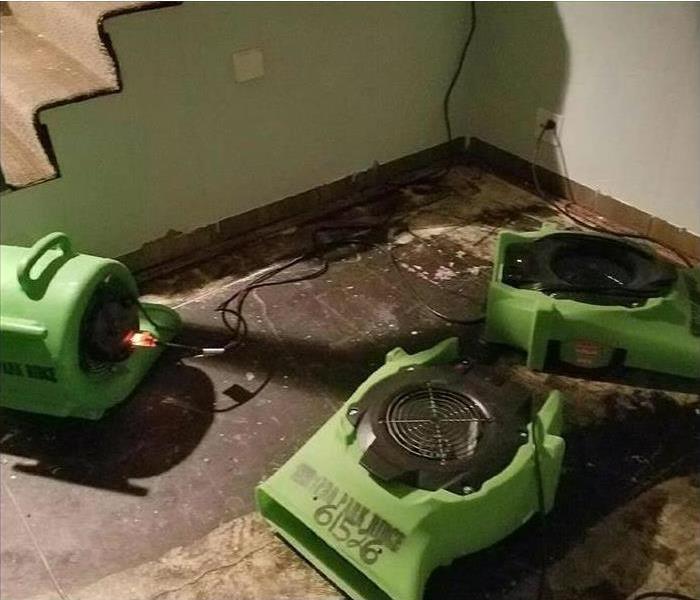 If your home has water damage or sewage, call SERVPRO, we have professional machines to clean up and restore your home efficiently.
If your home has water damage or sewage, call SERVPRO, we have professional machines to clean up and restore your home efficiently.
When Is It Appropriate To Use Drain Cleaners?
When you encounter a clogged drain at home in Chicago, IL, you want to fix the problem as soon as possible. Though you may be tempted to immediately use a drain cleaner, it’s not always an appropriate fix for every problem.
• With Newer, Stronger Pipes
Pipes that have been installed recently will be significantly stronger than older pipes, and therefore will be able to stand up to the cleaner’s chemicals. Older pipes are particularly susceptible to damage from chemical drainage cleaners. Using harsh cleaners with older pipes could create a more serious sewage issue, costing you additional time and money to clean. If you have plastic pipes in your home, do not use a chemical cleaner regardless of how new the pipes are, as the plastic will immediately erode upon contact with a chemical cleaner.
• If You Have Appropriate Tools
It’s essential to only use drainage cleaners if you can do so safely. Just as the chemicals in drain cleaner can damage pipes, it can also be harmful if it makes direct contact with your skin. When using drainage cleaner, take precautions to ensure that your skin will not come in contact with the cleaner itself. If you do not have access to protective gloves and other safety equipment, it’s best not to use chemical cleaners.
• Minor Blockages
Using harsh cleaners can create more issues if used when a drain is entirely blocked. If you are certain that your clogged drain is not entirely blocked, then you can use a cleaner to remove the blockage. However, a drain that is wholly blocked will cause the drainage cleaner to remain in the pipes, which can result in even the strongest of pipes becoming eroded and damaged.
Clogged drains can disrupt your day-to-day life in your home. If you encounter an issue with your drains that can’t be easily fixed, contact professionals in sewage cleaning who will ensure your drains are safely and quickly cleaned.
Minding the Gaps: Finding Good Storm Coverage
9/27/2021 (Permalink)
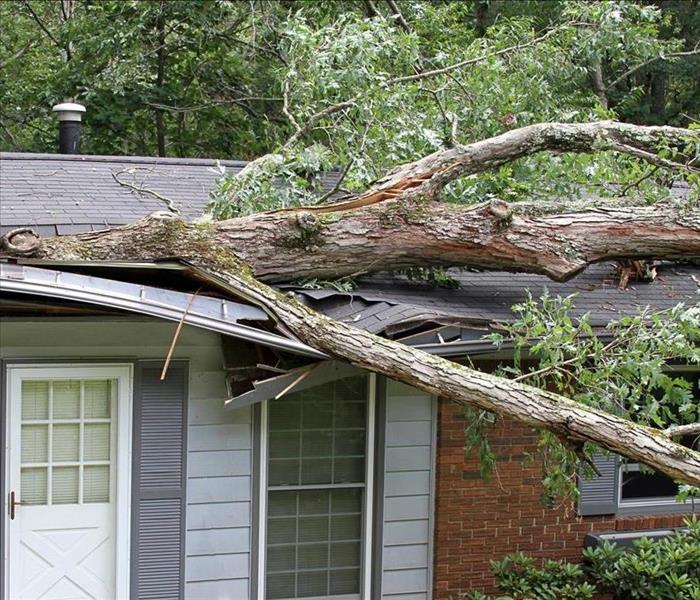 When you are shopping for the best commercial insurance package, don't forget comprehensive storm insurance.
When you are shopping for the best commercial insurance package, don't forget comprehensive storm insurance.
If your commercial property in Park Ridge, IL, is frequently beset by storms, your property insurance coverage is probably not sufficient to pay the costs of the flood restoration services you will likely need at some point. You need storm insurance. Even with the extra coverage, however, it is important to make sure that you pay close attention to the exclusions listed in your policies. Only by filling in all the gaps that other policies leave do you get the best coverage possible.
Flood Damage
Most floods caused by natural disasters or other extreme circumstances aren't covered by general commercial property policies. You will need flood insurance to protect yourself from having to pay out-of-pocket expenses like the following:
• Water mitigation services
• Restoration costs
• Building inspection fees
After you pay your deductible, your storm insurance is likely to cover the bulk of your recovery expenses. Having a policy in place before the storm season arrives is essential.
Hail Damage
If your storm coverage focuses on flooding, it may include exclusions for other damage that your building could sustain during a storm. Hail damage often accompanies violent thunderstorms, but some insurance policies don't cover the damage that a hail storm can cause. In this instance, you will need additional coverage to fill in the gap left by the exclusion.
Lightning Damage
When lightning strikes your building, it can cause quite a few problems. Other than raising the risk of fire, it may also short out your electrical system, leaving you without power regardless of how reliable your backup generator may be. If other systems, such as your building's plumbing or HVAC system, rely on power, then you can see how expensive a lightning strike could become. Many policies exclude lightning damage for this reason. Your insurance company may offer rider policies to compensate, however.
When you are shopping for the best commercial insurance package, don't forget comprehensive storm insurance. One storm can cause extensive damage. It can give you peace of mind to know that you are protected.
Can My Wet Carpet Be Saved?
6/23/2021 (Permalink)
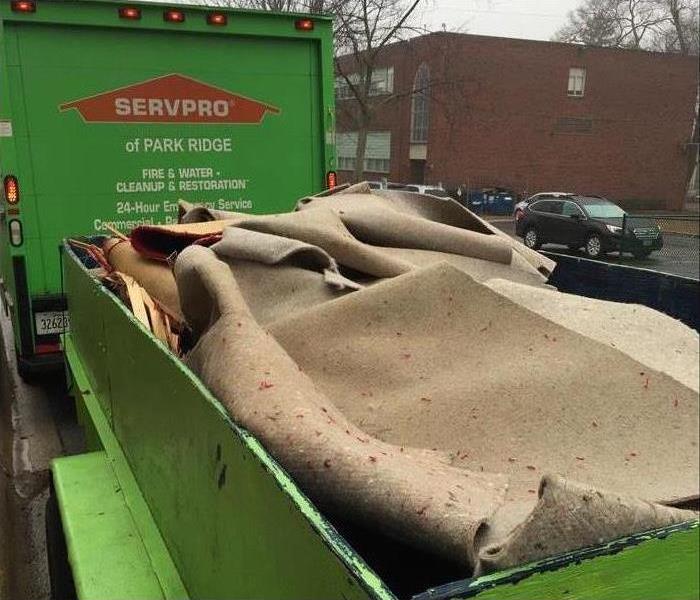 Carpet removal in a Chicago, IL home
Carpet removal in a Chicago, IL home
Can My Wet Carpet Be Saved?
Flooding at your home in Chicago, IL, can be overwhelming and confusing. What needs to be thrown away? What can be restored? For some contents of your home, the decision to keep or discard after a pipe break may appear cut and dry. When it comes to carpet, however, there are multiple factors that go into the decision.
To Save
Oftentimes, wet carpet can be saved when professionally dried and cleaned by a water restoration company. Follow the tips below to know when your carpeting can be rescued:
The source of the water is the most important factor when making this decision. If the water came from a clean source, like a pipe break or supply line, it is likely salvageable.
Consider the amount of time that the carpeting has been wet. Usually, less than 24-48 hours is a good rule of thumb. Mold can develop and spread quickly, so it is important to act fast.
Not To Save
In certain instances, water damage to the carpeting is irreparable. Know which situations necessitate taking it out with the trash:
If the source of the water is contaminated, such as from a sewage backup, the carpeting must be discarded for safety reasons. Black water contains viruses, bacteria and other microorganisms hazardous to your health.
Regardless of the type of water, carpet padding cannot usually be saved because it is so difficult to clean.
Carpeting that is under standing water or damp for more than 24-48 hours is at high risk for mold growth. Once mold is present, it should be replaced to avoid further problems.
Regardless of whether you choose to clean or replace your carpeting in Chicago, IL, it is critical to take immediate action. After a pipe break or other source of water damage, call a water restoration specialist and your homeowner’s insurance agency to begin the process of drying and restoring your home.
Creating a Broken Pipe Playbook
5/11/2021 (Permalink)
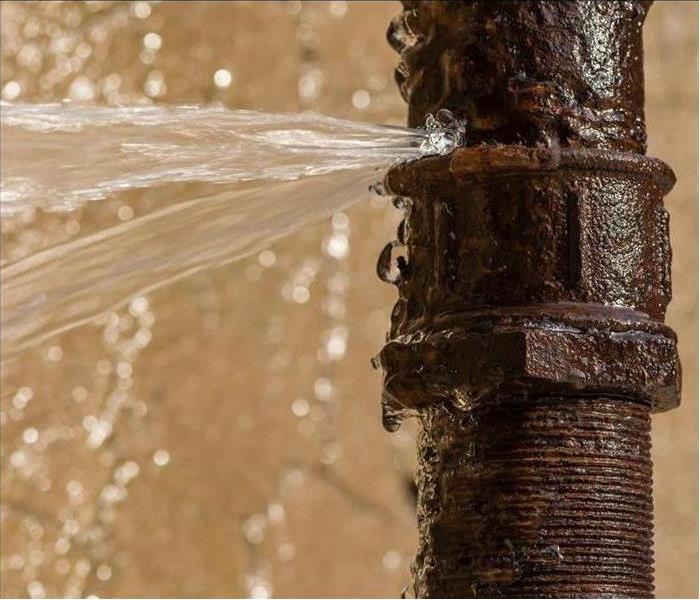 Don’t let a broken pipe break your business.
Don’t let a broken pipe break your business.
Don’t let a broken pipe break your business. Commercial water damage in Rosemont, IL, can be approached like any sports game; with planning and training, a competent team, and a winning attitude, you can almost certainly win this match against flooding.
Identify Your Teammates and Opponents
Who will help you triumph, and what can hinder your chances for victory? You may be better prepared for a future issue by developing a general understanding of your building’s potential flood-friendly areas before an incident occurs. Any of these may be your water rivals in the workplace:
- Fire sprinkler system
- Toilets
- Sinks (in restrooms, breakrooms, and kitchens)
- Water drinking fountains
- Any other water supply line (waterfall feature in the lobby?)
Never fear these foes, however, as you likely have a talented group on your bench with unique skill sets, knowledge, and experiences to keep your business afloat. You may not inherently understand the inner workings of your building’s plumbing and drainage system, but you can identify professionals and services who do. Teamwork is key!
Play Defense
Businesses do not need to wait until a broken pipe issue occurs before developing a plan of action for water repair and deterrence, but when flooding happens, damage defense follows. Building restoration services can quickly and efficiently assess and address the problem, mitigating future concerns that could stem from the same initial breakage (cue the cheerleaders, “M-O-L-D, mold prevention, 1-2-3!”) These cleanup captains will also tackle soaked structures, upholstery, and tough odors so your team can return to the workplace with minimal interruption.
With any sports team, fine-tuned equipment is necessary. Make sure you and your teammates are stocked with helpful tools and tips, such as mold prevention guidelines, and determine to whom certain tasks will be delegated (internally and externally).
Win the Game
Unexpected water damage can impact your commercial space at any time, but your business can prevail if you train with a proper playbook, then confidently face the competition. If you approach a broken pipe like a sporting event, you will realize victory is reachable with the support of a team of experts on your sideline.
4 Causes of Water Damage
2/17/2021 (Permalink)
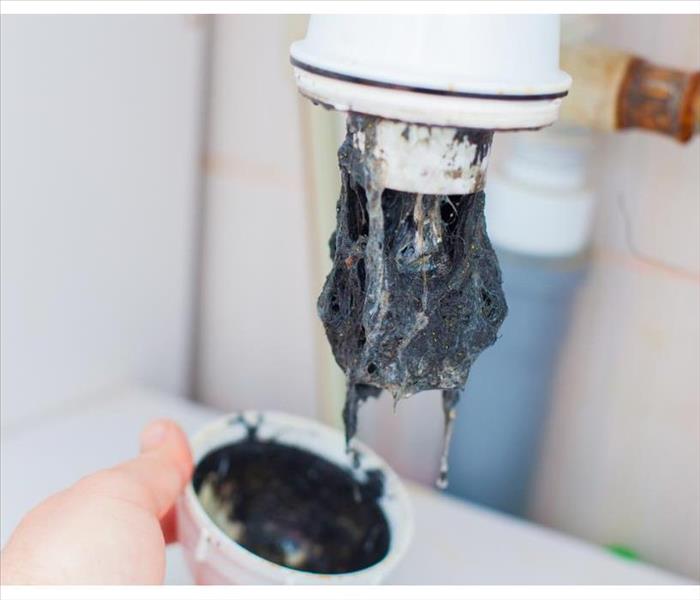 Everyone has experienced the reduced trickle of water when something gets lodged in a pipe.
Everyone has experienced the reduced trickle of water when something gets lodged in a pipe.
Four Common Factors Of Water Damage
If you run a business in Rosemont, IL, water damage can be a major hindrance to your operation. Whether you are dealing with a pipe burst cleanup or mitigating the impact of a supply line leaking, you want to address the problem as soon as possible. A trusted water restoration specialist can handle the water cleanup quickly. In the meantime, it's a good idea to familiarize yourself with these four common factors of water damage.
1. Clogged Pipes
Everyone has experienced the reduced trickle of water when something gets lodged in a pipe. Fishing out the offending item gets it flowing normally again. However, a deeply lodged clog can cause a buildup of pressure in the pipe and even a burst. Because water can spill out rapidly, a pipe burst cleanup can be a major undertaking.
2. Extreme Weather
If the water in your pipes drops below 32 degrees Fahrenheit, it will freeze. Water expands approximately 9% when frozen, sometimes forcing it to rupture the pipe it is contained in. Having your pipes insulated or heating their space can mitigate this risk.
3. Corrosion and Deterioration
Pipes and supply lines lose their integrity over time for a variety of reasons, such as pH imbalances, rust buildup and stretching. It is a good practice to regularly inspect your water systems for any of these defects.
4. Loose Hardware
Sometimes the problem is as simple as a loose nut on your supply line. If this is the case, tighten the nut where the leak is found. Be careful not to overtighten, as this can cause the threads of the nut to crack. If the leak persists, applying a pipe joint compound may fix the problem. Otherwise, you need to replace the hardware.
When you run a business, you want to be ready for any scenario that may occur. Being aware of these common causes of water damage can help you avoid a costly and unpleasant supply line leak or pipe burst cleanup.
What to Do if a Pipe Breaks
2/5/2021 (Permalink)
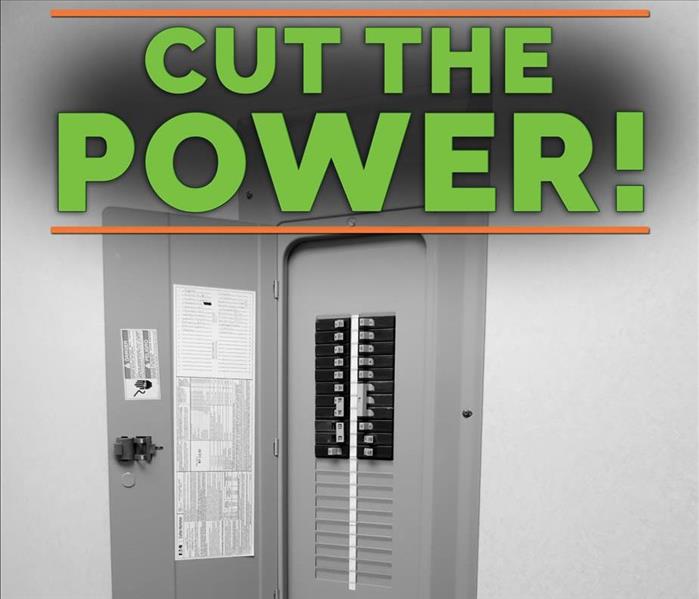 The first thing you want to do is turn off the power to the flooded area.
The first thing you want to do is turn off the power to the flooded area.
Here Are A Few Things You Need To Do After A Flood
Bursting pipes are one of the most difficult problems to deal with if you are a homeowner. If this is your first time, you might not know what to do. There are a few things you need to do after a flood due to a pipe breaking.
Shut Off the Power
The first thing you want to do is turn off the power to the flooded area. This will keep you from getting shocked when you enter the area. You can follow these steps:
- Turn the power off at the breaker or main
- Double-check to make sure it is off
- Unplug all devices
- Remove all devices from the waterlogged area
Only do this if you can safely reach the electrical panel. If you can't, call in experts to deal with it.
Stop the Source
Aside from flooding due to a storm, bursting pipes are the major cause of indoor flooding. Fortunately, it is one of the easiest to stop. Turn off the water and fix the pipe. You can do this by replacing it or patching a new section in.
Save What You Can
Take any items that did not suffer water damage out of the area where the flooding occurred. Essentially, save what you can and call a professional in Rosemont, IL to help with the rest.
Call Your Insurance Company
Your insurance policy might cover the cost to fix broken pipes and water lines. If they cover it, they might also be able to help with water damage restoration. It is worth the phone call to save money on repairs.
Beware of Mold and Mildew
Mold and mildew are the two worst issues when it comes to water in your home. Both can take hold quickly and cause amazing amounts of damage if they are not spotted. Look for fuzzy brown, white, grey, or black patches on wet items.
Bursting pipes can be a pain, but it is not the end of the world. If you follow these simple steps, you should be able to clear things up in no time.
How To Combat a Broken Pipe
11/30/2020 (Permalink)
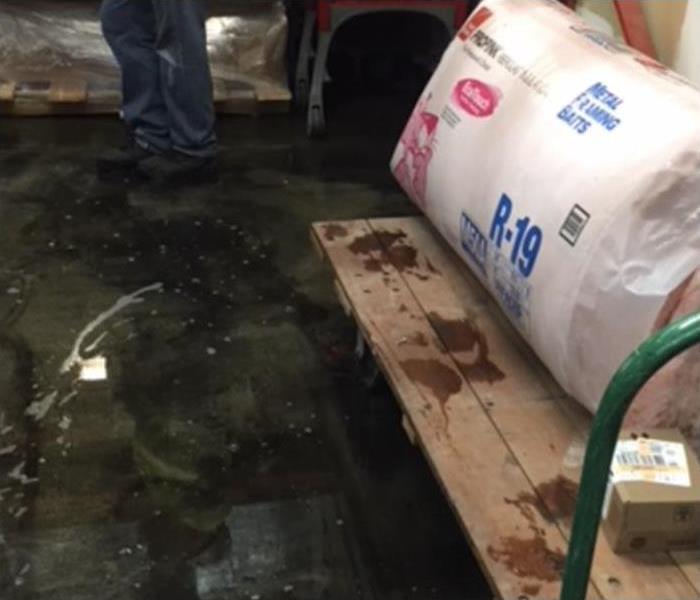 Water damage in a Chicago, IL home
Water damage in a Chicago, IL home
Here Are A Few Ways To Combat Broken Water Pipes
It is natural to feel a sense of panic when dealing with bursting pipes. In the event that you are having plumbing issues at your home in Chicago, IL, you must remain calm and be diligent about getting the problem fixed.
Assess the Situation
Once you notice something wrong with your pipes, go through your home to try to pinpoint where the complication started so a plumber can fix the broken pipe as quickly as possible. Some water leaks are obvious, while others can take months to rear their heads. If you have a concern that is hard to locate, the following can be tell-tale signs of plumbing trouble:
- Moisture damage (like stains or mold) on walls or ceilings
- Low water pressure
- Water bills that are higher than usual
Call a Professional Immediately
After you have fixed the leaking or bursting pipes and completed as much damage control as possible, the next step is to call a water damage repair service right away. When dealing with water leaks or flooding, it is crucial to get the area thoroughly dried out and inspected for mold as soon as possible. Mold can start to develop in wet areas within 24-48 hours, so rely on professionals to deal with the problem and restore your peace of mind.
Do What You Can To Prevent Future Leaks
You can't fully prevent a leak from springing at your home, but there are ways to care for your pipes and help extend their longevity, especially during cold winter months when they may freeze:
- Paying attention to weather and temperatures
- Open cabinets to allow air circulation
- Keep the water running on below-freezing nights
Failing to respond promptly to bursting pipes can have devastating consequences on your house's foundation and flooring. By knowing what to do when a plumbing disaster strikes, you can save a lot of money, and more importantly, your sanity.
How To Fix an Overflowing Toilet
10/14/2020 (Permalink)
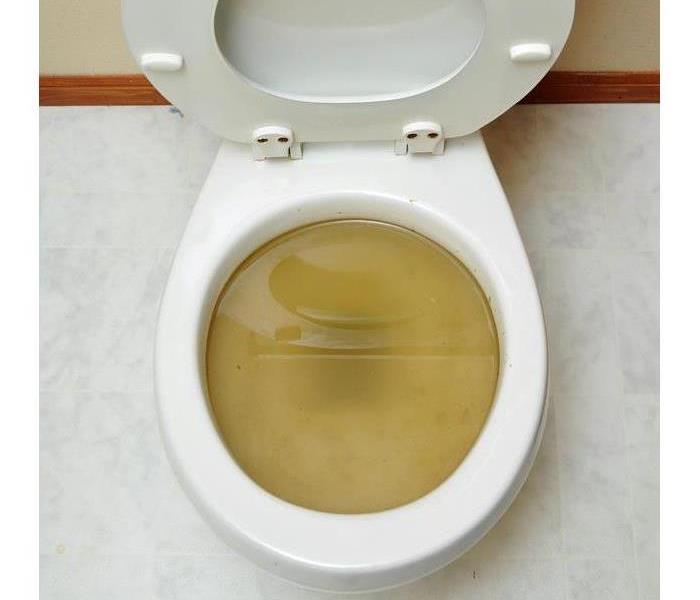 In a best-case scenario, clearing a small clog on your own will stop your toilet from overflowing
In a best-case scenario, clearing a small clog on your own will stop your toilet from overflowing
How To Fix an Overflowing Toilet
While no one wants to deal with an overflowing toilet, a clogged pipe can happen to anyone. Sewage cleaning requires professional help, so try to find the root cause of the problem first to avoid more damage.
Diagnosing the Problem
If your toilet overflows when you shower, something between the toilet and the shower is clogged, causing the backup. Small clogs can be taken care of with a bit of elbow grease, but bigger problems, like tree roots in your pipes or main line, require professional help. Keep the below in mind when you're working on the problem:
- Try clearing the toilet first with a plunger or a snake. If the shower is the culprit, run the shower after to make sure the clog cleared.
- Homeowners who are comfortable with more complicated repairs can try clearing their main drain but will likely need a pipe wrench to remove the cover. The process can be messy if there is sewage backup.
- A snake won't be able to handle the problem if there's a clog or tree roots in the line from your house to the main sewer line. If your DIY efforts have failed, don't attempt further work on your own at this point. A professional will need to repair or replace the line, depending on the scope of the damage.
- If you have a septic tank, make sure it's being regularly maintained. A full or damaged tank will cause toilet overflow.
- Look into professional sewage cleaning. Water from sewage backup can contain dangerous contaminants.
Cleaning Up Damage
Should your toilet overflow, any water damage should be taken seriously and addressed promptly. A professional water damage restoration company in Chicago, IL, can keep your home protected. Hiring the right help ensures any contaminated water is treated properly.
In a best-case scenario, clearing a small clog on your own will stop your toilet from overflowing. With more major issues, professional plumbers and sewage cleaning may be necessary to avoid further water damage to your home.
4 Actions To Take To Prevent Water Damage
9/2/2020 (Permalink)
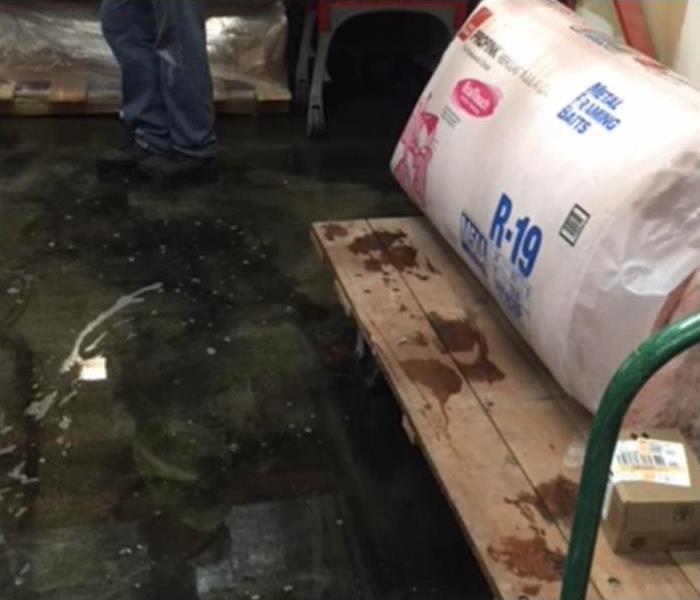 Water damage in Rosemont, IL
Water damage in Rosemont, IL
Avoid Water Problems In Your Property
Sometimes events happen that come without any warning at all. For example, a brand new appliance fails and leaks water all over a room. The truth is, though, that many incidents are preventable and a little foresight or timely maintenance can often prevent an expensive business claim. This is important because water damage in your company can easily run into the thousands of dollars. Even if you have good property insurance, the disruption to your business can be unsettling. Here are a few things you can do to avoid large water problems on your property.
1. Winterize the Plumbing. If your property in Rosemont, IL, is located in a cold-weather region, the plumbing system should be protected against freezing weather. This includes such items as the outdoor sprinkling system as well as any indoor areas that are exposed to the cold. Failure to properly winterize items each season can lead to a pipe break and damage to the property.
2. Have a Plan. To avoid an unnecessary business claim, you should write down a plan for regular maintenance of water lines and appliances. Don't rely on memory to make sure the pipes are cleared out every fall, but commit it to a written schedule.
3. Take Quick Action. If anyone notices water where it does not belong, act aggressively. A small water leak can quickly grow larger. A leak can also lead to other problems such as mold growth.
4. Call in the Professionals. If your pipes break or an appliance fails, call for the help of a local water remediation company. Trained technicians will arrive on scene and work to mitigate any damage. They will remove any standing water and address the source of the water problem. They can also help you document the damages and expenses for a business claim. A professional response minimizes any disruptions to your company.
What To Do if Water Is Dripping From a Ceiling Light
5/28/2020 (Permalink)
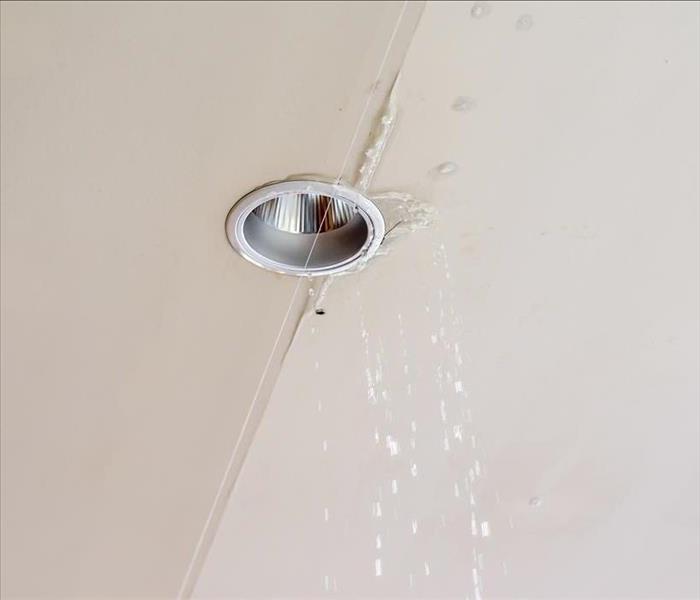 Water in light fixtures isn't an everyday event
Water in light fixtures isn't an everyday event
What To Do if Water Is Dripping From a Ceiling Light
You’ve just settled into bed after a busy day, and then you feel it — an icy drop of water hits your face. You know nothing about water in light bulbs, other than it’s bad. What now?
Don’t panic! Before calling professional help in Park Ridge, IL, follow these steps:
- Shut off the light switch. (Use a flashlight if it’s dark).
- Find the water main to the house and turn it off.
- Go to the breaker box and shut off the electricity.
Once you’re safe, evaluate the situation. Water in a light fixture often causes ceiling damage and electrical problems, so you'll need a specialist who can address this combination of issues. Instead of an electrician or plumber, consider a company that offers water damage restoration. This is definitely not a DIY situation.
Water Damage Restoration: What To Expect
Water in light fixtures isn't an everyday event. In fact, you probably never thought you’d be in this situation, so you may have no idea what happens when it occurs. Here's what to expect:
Evaluation: Your provider will survey the affected areas and document the needed repairs.
Elimination: This is the water removal process, which can vary depending on the amount of water and the location of the leak.
Sanitization: The technician should remove humidity and mold, then thoroughly sanitize the area.
Restoration: The last step involves any repairs needed to return the area to normal.
Water Damage Prevention: What To Do Next
Now that you’re familiar with the effect of water in light fixtures, how can you prevent it? While natural disasters are unpredictable, you can monitor the following:
Faucets and toilets: Make a habit of checking for drips, leaks, and cracks around these fixtures, especially in rooms on the second or third floors.
Water heaters, dishwashers, and washing machines: Large appliances that use water can be prone to problems as they age. Regularly inspect the floor and walls around these machines, and any visible hoses, for signs of moisture and mold.
These simple steps can help you avoid unwanted water in the future. Sleep well knowing you’ve done your best to protect your investment from another round of ceiling damage.
Your Fix for a Leaky Toilet
2/19/2020 (Permalink)
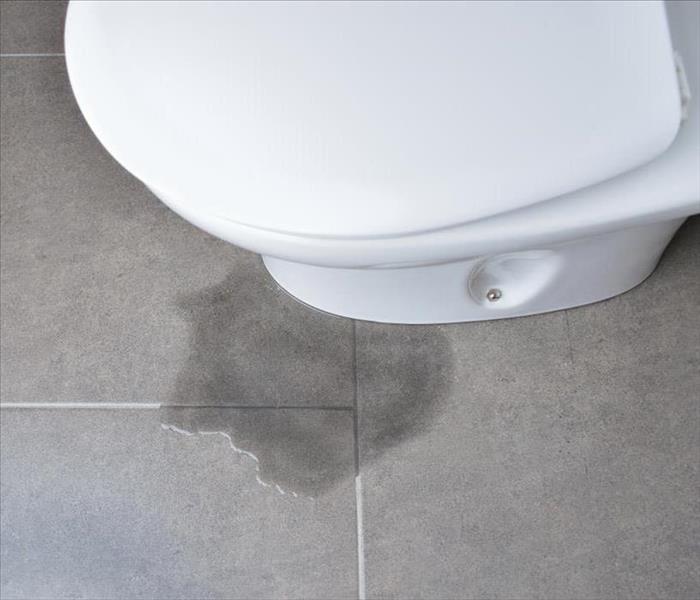 Leaking toilet in a Park Ridge, IL home
Leaking toilet in a Park Ridge, IL home
Here Is Your Guide To Fixing a Leaky Toilet
A leaking toilet can be more than just an annoyance. If you notice water pooling around the base of your toilet, address the issue as soon as possible. Don't delay repairing the leak, as it could lead to structural damage in your Park Ridge, IL, home. Here is your guide to fixing a leaky toilet.
1. Finding the Leak
First, you need to locate the source of the leakage. Water often leaks from a faulty seal under the toilet. However, the spillage could also be from a supply tube, a shutoff valve or a damaged tank or bowl - especially if you have an old toilet. Clean up the pool of water and wait until a new one appears. If the toilet leaks from underneath, it's time to replace the wax gasket.
2. Replacing the Wax Gasket
Wax gaskets are crucial for creating a watertight seal between the toilet and flange. To begin the replacement process, use a wrench to disconnect the supply tube from the shutoff valve. Then remove the toilet's bolt caps and the hex nuts. Now you're ready to move the leaking toilet. Carefully lift the toilet by the bowl - never by the tank. Scrape the old gasket off with a putty knife, then center the new gasket on top of the flange. Next, connect the new supply tube and place the toilet back in its original position. Press down on the bowl to compress the gasket, tighten the bolts and press down on the bowl again. You're almost finished - connect the supply tube to the shutoff valve, open the valve and flush the toilet to ensure the leaks have stopped.
3. Addressing the Water Damage
After you've completed the toilet repair, check for water damage. It's best to call in specialists in water damage restoration who have advanced training and equipment to find and remedy any issues. Enlisting the help of experts can minimize the time and money you spend on the project.
It's important to fix a leaking toilet as soon as possible. By taking action as quickly as you can, you lessen the chance of severe water and structural damage to your home.
5 Tips To Avoid Small Business Claims From Water Damage
1/29/2020 (Permalink)
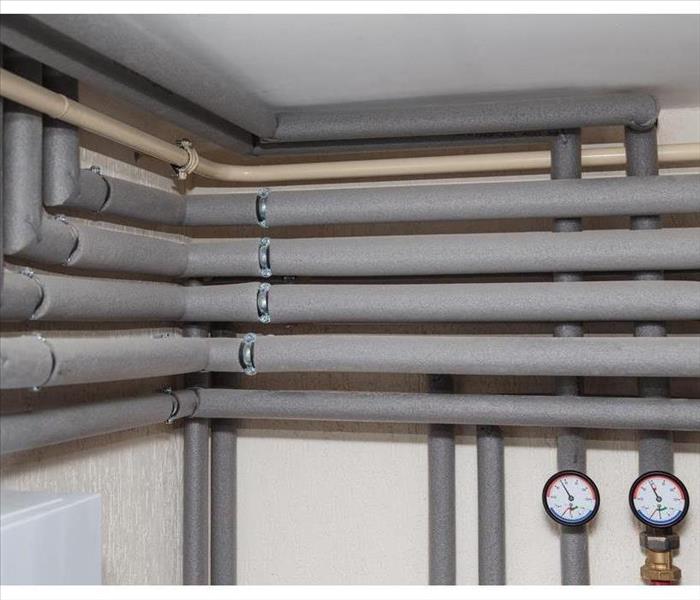 Insulate those pipes
Insulate those pipes
Five Quick Tips To Reduce the Chance of This Type of Damage
Having insurance is critical for most businesses, yet the ideal circumstance is that you never have to use it. The second most common business claim for damage is from frozen pipes and water damage, and an average claim is around $17,000.
Water damage can come from several common sources in Chicago,IL, such as severe storms, sewer backups and frozen pipes. There are a few types of damage that can occur as the result of water intrusion, including
- Destroyed carpets
- Wall, flooring and subflooring damage
- Mold and fungus
- Ruined inventory
With some simple maintenance of the building, the risk of business claims can be drastically lowered. Here’s five quick tips to reduce the chance of this type of damage.
Insulate Those Pipes
Most hardware stores have simple foam coverings that can easily be fitted around pipes. In all but the most extreme cases, this will make a major difference. For plumbing that is especially exposed, you may have to take further steps to avoid a pipe break.
Maintain and Trim Adjacent Trees
Not only do tree limbs threaten roofing, tree roots can really tear things up underground. If it’s getting close to plumbing, you should consider replacing the tree with something that has less aggressive roots. Ice can also fall from overhanging trees and severely damage the roof.
Keep the Temperature in a Safe Range
Saving utility costs shouldn’t come at the expense of broken pipes. In most locations, lowering the thermostat to around 50 degrees when unoccupied is enough to balance wasted energy against a flooded building.
Visible Moisture Damage Is an Instant Alarm
Fungus, visible moisture or ceiling tile discoloration means you have an issue. Get it inspected immediately to reduce further damage.
Know Where the Water Shutoff Is
You should know exactly where the water shutoff is. Make sure your employees know how to use it also.
If you have water damage in Chicago, IL, you need a professional restoration service to examine it and advise you regarding repairs. The sooner you call, the less time the water has to do its dirty work, and you can avoid a business claim.
7 Signs Its Time for a Toilet Replacement
12/23/2019 (Permalink)
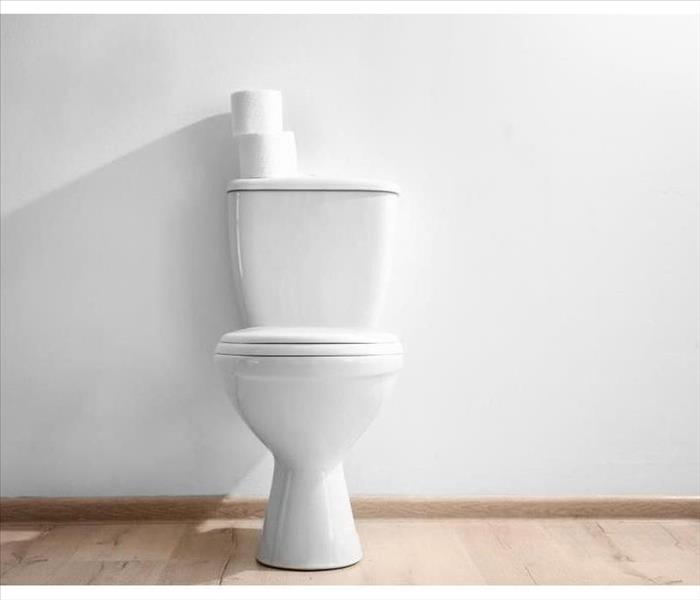 Replacement toilet in a Rosemont, IL home
Replacement toilet in a Rosemont, IL home
A leaking toilet in your Rosemont, IL, home doesn’t necessarily mean its time to head to the hardware store for a replacement. If it is newer, a simple toilet repair may do the trick. When it comes to aging toilets, besides their inefficiency, they are more prone to problems that could result in needed repairs beyond the bathroom that require a water damage specialist.
Signs a Replacement Is Needed
An old toilet has been used a lot through the years. All that work it has done eventually leads to issues that are sure signs that it’s time for something new.
Clogging – While some clogging is normal, consistent clogging may indicate a hidden issue. If it needs to be unclogged weekly or it abnormally backs up, it is probably time to replace.
Cracks – These are the main culprits of a leaking toilet both on the interior and exterior of the toilet. If the crack spreads, it can quickly lead to water damage and mold growth.
Constant Repairs – If seals, gaskets, flappers and other elements seem to always need to be fixed or tweaked, it can begin to make a more noticeable dent in your wallet than buying a new one.
Instability – Wobbling may indicate a loose screw. If tightening a bolt doesn’t do the trick, there could be damage to the flooring under the toilet.
Flushing Issues – High water bills are an indicator that the toilet isn’t functioning properly.
Surface Damage – Cleaning the toilet is not usually the most enjoyable a task. If your toilet is older, it can seem like a never-ending battle. Surface scratches can begin to deteriorate the porcelain, allowing for more buildup.
Mineral Deposits – If you have hard water issues, minerals eventually buildup in a toilet’s components, as well as in the pipes. Once there is too much, getting rid of it is difficult.
If you have a leaking toilet, quick action is the key to keeping further problems at bay. When addressing the issue, consider the above factors to determine if it’s time for a fix or a replacement.
3 Common Places Where You Can Expect Water Leaks
10/15/2019 (Permalink)
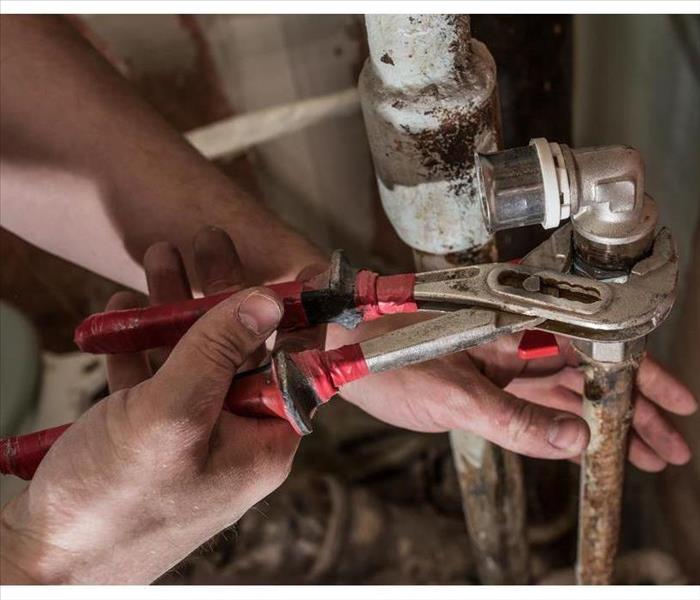 Certain appliances require water to perform their functions, but when they are defective, they can create strong water leaks
Certain appliances require water to perform their functions, but when they are defective, they can create strong water leaks
Learn More About The Places Where You Can Expect Water Leaks
Most water damage cases in your Rosemont,IL home are a result of water leaks. These leaks can sometimes be hard to detect, and by the time they manifest, there might be too much water in home. This occurrence can make any water damage repair attempts difficult. Continue reading to learn more about the places where you can expect water leaks and how to prevent excessive damage.
Home Appliances
Certain appliances require water to perform their functions, but when they are defective, they can create strong water leaks.
- Refrigerators
- Dishwashers
- Water heaters
- Laundry machines
For the most part, these leaks are caused by aging components, damaged hoses and broken connections. The best way to reduce this damage is to conduct regular inspections and maintenance to ensure all parts work properly. Replace any cracked, worn out or outdated parts fast to prevent broken hose or pipe cleanup.
HVAC System
The heating, cooling and ventilation equipment in your home provides the right air temperature, depending on the season. It is normal for the unit to cool the air around it, causing condensation that drips outside of your home. However, if the system starts leaking and getting water in home, there is a major problem. If left unattended, this leak can cause water damage and even corrode the system. Place a pan under the dripping area to contain the problem and call a repair professional immediately.
Plumbing Problems
Your house's plumbing system is responsible for several vital functions, mainly transporting water where needed. While it is important to keep it in great shape, it also means any error can leak water anywhere in your home. From a loose connection to a broken pipe, these problems can create water damage in unsuspecting places. Look for signs of moisture and inspect your pipework to prevent damage from taking place.
Standing water in home can create costly, destructive damage. Closely look at these common leak sources and act fast if water starts to leak from them.
3 Useful Ways To Avoid Water Damage in Your Home
8/28/2019 (Permalink)
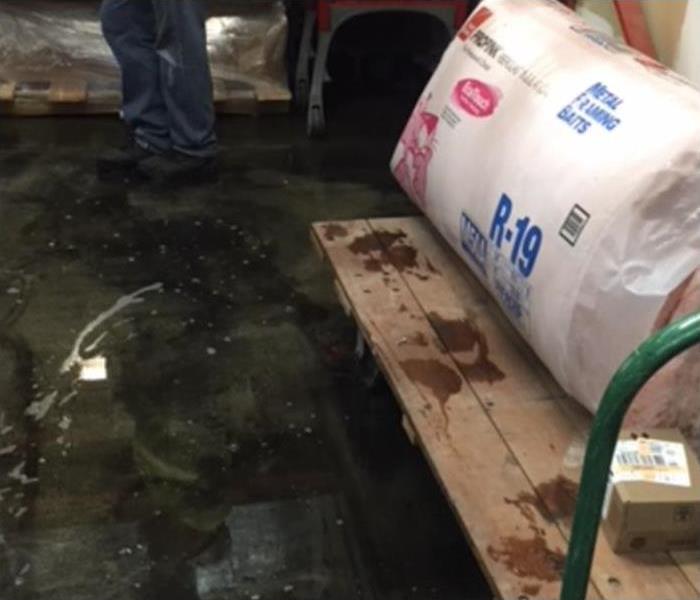 Water damage in Rosemont, IL
Water damage in Rosemont, IL
Ways to Avoid Water Damage In Your home
Water in the home can cause a catastrophic amount of damage, and many homeowners in Rosemont, IL, are eager to prevent water damage from occurring in their homes. However, many people aren't sure how to prevent this type of damage. Fortunately, there are several ways homeowners can avoid water damage in their homes.
1. Monitor Your Appliances
Damaged or broken appliances are often a common cause of home flooding. Any appliances that use water, such as washing machines, dishwashers or sinks can leak or malfunction, and it can be easy to miss these issues. However, by monitoring your appliances, you are more likely to notice if an issue arises. If you notice that one of your appliances is malfunctioning or leaking, it can be useful to contact someone who can inspect the appliance.
2. Maintain Your Home's Pipes
If a broken pipe causes your home to flood, it may be helpful to contact emergency water damage restoration services. However, rather than worrying about pipe cleanup after there is water in the home, it's often preferable to instead maintain your home's pipes in order to prevent a flood. It can be helpful to observe your pipes for any signs of leaks or corrosion. In addition to your own observations, it's often wise to employ a plumber to perform routine maintenance on your home's pipes in order to prevent flooding.
3. Keep Humidity Levels Low
Though water damage is generally associated with flooding, your home can also sustain water damage if humidity levels in your house are high. High humidity levels can cause certain materials, such as plywood, to weaken. Additionally, excessive moisture in the home can also increase the likelihood of mold growth. To prevent humidity levels from rising too high in your home, it can be helpful to use fans and dehumidifiers when cooking, bathing or showering.
Understanding how to prevent disaster from striking your home can bring you peace of mind. You can often prevent water in the home by monitoring your appliances, maintaining your home's pipes and keeping low levels of humidity in your home.
Avoid Secondary Damages After Flooding
6/12/2019 (Permalink)
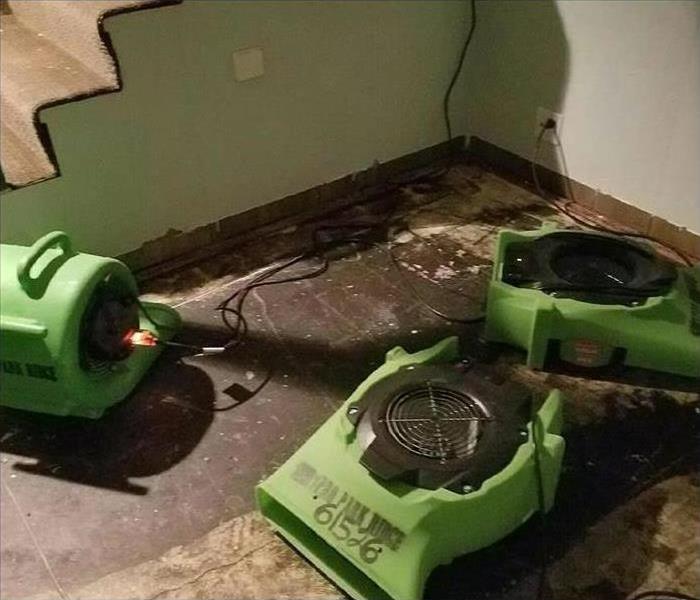 Water damage in a Chicago, IL home
Water damage in a Chicago, IL home
Secondary damages are those caused after the initial stage of damage. For example, if a faucet is left on long enough to flood a room or two, black mold may linger long after you've cleaned up the most obvious damages. Unfortunately, it often takes a while before it becomes obvious that secondary problems are affecting your home.
What are The Main Causes of These Out-of-Sight Damages?
If flood water is allowed to stand in your home long enough for it to begin evaporating, you can almost certainly expect mold growth and other types of secondary home damages. Common causes include
- Extensive water damage
- Undiscovered leaks or flooding
- Inadequate dehumidification
- Unknown conditions or damages in inaccessible areas
- Lack of a timely response to trouble
How can I avoid extra losses related to water damage?
The key to avoiding further trouble is a quick response. The cleanup process must begin immediately for the best results. Pay close attention to materials such as sheetrock, hardwood floors, vinyl flooring, and any porous furnishings. Black mold spores quickly colonize wherever organic materials and a bit of high humidity are available.
If I don't have water damage coverage, will my insurance cover secondary water damages?
If you do have coverage for this situation, secondary damage will certainly increase the cost of the repairs and affect your claim. If your policy doesn't cover water damage situations, it's best to ask the insurance agent about mold or further troubles.
How can I minimize losses?
Call water remediation professionals as soon after discovering the water as you can. Begin to ventilate the property and remove as much water as you can. Open doors, cabinets, and drawers to provide ventilation for any humid areas. Remove your belongings from the home before they suffer more damage. (If you do have coverage, contact your insurance adjuster before moving anything.)
The best way to avoid black mold growth and other secondary water damages is to act quickly. Any hesitation can lead to more trouble for your Chicago,IL, home.
3 Problems Caused By Leaking Water
4/16/2019 (Permalink)
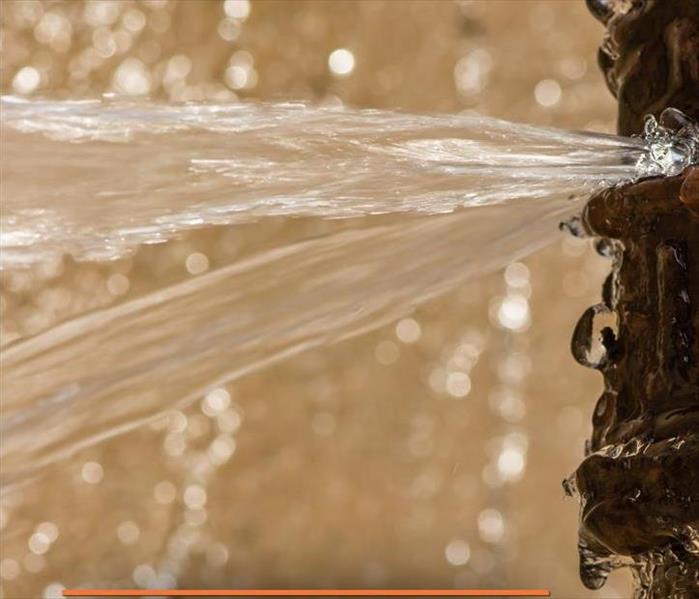 Pipe break can cause water damage
Pipe break can cause water damage
A water leak might not seem like a big deal, but it can cause quite a few problems for your Rosemont, IL, business if it isn’t taken care of right away. Here are a few issues that you might end up dealing with if you have a leak in your building.
1. Higher Water Costs
If there is a pipe break in your building, it can cost you a lot of money over time. The worse the leak, the higher your bill. Sometimes, you can have a leak for a long time before you notice it, so it is a good idea to perform regular maintenance to prevent this from happening. If you believe that your water bill is higher than it should be, this might be the cause.
2. Structural Damage
Not only can the leak itself cost you money, but it can cause water damage that will be costly to repair. If it is not fixed quickly, the leaking water can weaken the structure of your building by causing the walls and floors to begin warping or rotting, depending on the materials used. Eventually, they will need to be replaced, which can cost your business both time and money.
3. Mold
Another common problem that can be caused by a water leak is mold growth. While this will not usually affect the structure of the building, it can still cause damage. This fungus spreads quickly in moist environments, so if you have a persistent leak, you may find mold growing inside of your walls. It can cause discoloration as well as a strong, musty odor if not removed.
Despite the problems it can cause, if you do find a water leak in your building, there is no need to panic. A water damage repair company can help you by stopping the leak and repairing any damage it has already caused. Regular inspections of your building can help prevent any long-term problems caused by water.
3 Tips for Water Damage Claims
3/13/2019 (Permalink)
 Your fast action and knowledge of your policy can help you file a successful claim.
Your fast action and knowledge of your policy can help you file a successful claim.
Bursting pipes are not the only issue that could prompt the need for water remediation services in your home. So many different factors can play into filing your insurance claim that you may not know where to begin or how to decide if the damage to your home in Park Ridge, IL, is covered. Here are three ways to improve your confidence that your claim will be accepted.
1. Review Your Policy
Most homeowners' policies cover sudden or accidental water damage, but not every repair associated with it is necessarily covered. For example, your insurance will likely pay for the damage caused by a busted pipe but not to fix the broken pipe itself. Depending on the exemptions in your coverage, you may be able to pay for the remediation of any secondary damage that happens as a result of the original issue if it was covered by your policy. Your insurance agent can help you understand exactly what your policy covers.
2. Perform Regular Maintenance
The key to an accepted claim is often your own vigilance. Have bursting pipes repaired as soon as you notice the problem. Perform regular inspections and maintenance on all your plumbing. Make sure that your roof is intact, and have any weak points fixed immediately. If damage happens because you neglected to take care of your home, your claim may be denied.
3. Keep Accurate Records
Keeping a file with records of the repairs that plumbers and other maintenance professionals have done can help you back up your insurance claim. If your action on an issue is called into question, you have proof that you stayed on top of the problem. Accurate records also help keep you on track so that you remember when your last inspection or update was performed.
Whether water damage was caused by bursting pipes or some other type of leak, responding quickly and keeping an account of how you responded is important. Your fast action and knowledge of your policy can help you file a successful claim.
Which Water Heater Noises Indicate Attention Is Needed?
1/17/2019 (Permalink)
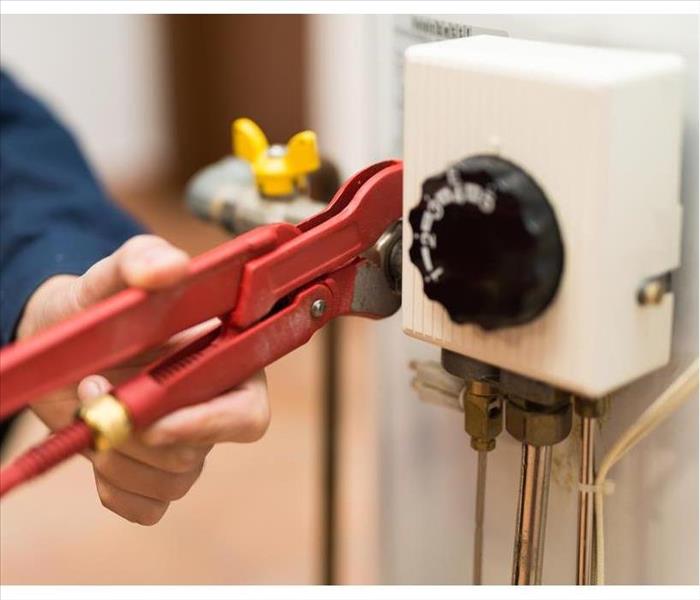 Inspection and regular maintenance of your water heater can eliminate many noises
Inspection and regular maintenance of your water heater can eliminate many noises
Your home in Park Ridge,IL , is filled with the normal noises of a home. Floors may creak and ceiling joists may pop. Your freezer and refrigerator whir and hum through their cycles. Your furnace or air conditioning unit may produce a fan noise. But when you start hearing noises coming from your water heater you may feel a bit uneasy and worry about whether it is safe. In the natural course of its function, sediment may collect at the bottom, calcium may build up on the sides, or an element may vibrate loose. What do the sounds mean
Normal or Unusual Sounds Your Water Heater May Produce
- Screeching or singing noises mean a valve needs to be opened
- Humming may mean the element needs to be tightened into place
- Tapping and ticking sounds are normal and can be caused by cooling cycles
- Knocking or hammering is usually from the abrupt shutoff of the tank, for instance following a shower, or wash load finishing
- Popping, crackling or rumbling usually indicate mineral buildup on the element and it should be replaced or you should perform a water heater flush
So, what can be done about some of the noises that need attention? Inspection and regular maintenance of your water heater can eliminate many of these noises. Performing a water heater flush using a deliming solution can help prevent sediment and mineral build up on the walls of your tank and may also keep your element cleaner. You may also find that installing a water softener may be of great help in keeping mineral build-up to a minimum.
If you hear something more bothersome, calling a water damage control specialist in Park Ridge,IL , may ease your mind. They will be able to help you assess and repair any damage that may have happened as well. Dealing with a water heater problem on your own can be intimidating. With regular maintenance you can increase your chances of having a happy and healthy water heater for years to come.
What Is the Best Equipment for Draining a Flooded Basement?
12/19/2018 (Permalink)
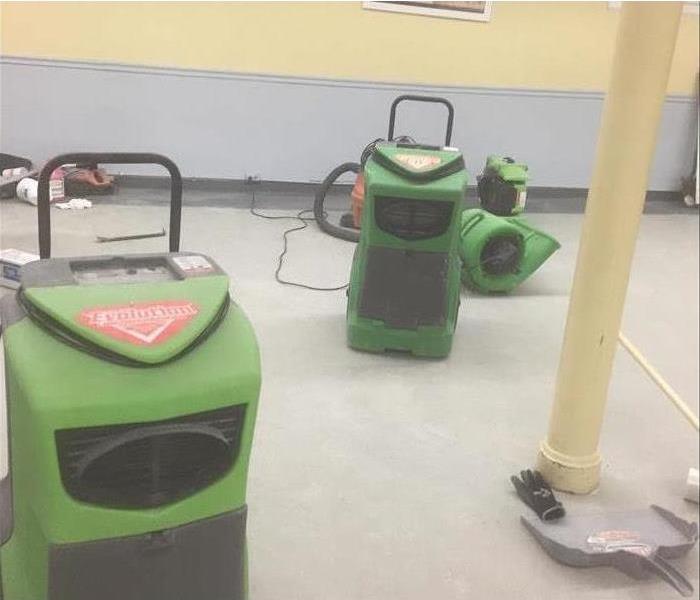 Dehumidifiers used during water loss in Chicago,IL
Dehumidifiers used during water loss in Chicago,IL
Potentially caused by anything from a major storm to a burst water pipe, a basement flood can be a major cleanup job for any homeowner in Chicago,IL, to tackle. If this is your first experience with draining water from the basement, you may need to obtain a few basic pieces of equipment to get started. Consider the following list of helpful tools for cleaning up a flooded space.
Submersible Water Pump
One of the most commonly used tools for water removal is an electric water pump. Be sure to look for a pump that is fully submersible and waterproof. When attached to your household garden hose, this pump begins the process of removing water from the inside of your home. You may need additional equipment such as the following:
- An electrical generator
- Nylon rope
- Heavy-duty extension cord
Wet/Dry Vacuum
In the case of a broken pipe, you may be able to catch leaks in the early stages before water levels get too high. For cleaning up a smaller water mess, you should consider using a standard wet/dry vacuum. Most models hold up to 5 gallons of water at a time and are easy to maneuver as you tidy up a small basement flood.
Dehumidifier
As with any case of residential water damage, getting moisture dried up as quickly as possible is the best way to prevent substantial water damage. Sitting water is one of the quickest ways mold and rot can develop in your home. A dehumidifier may help expel moisture in the walls and floor until professional flood cleanup services arrive at your home.
Check your home insurance coverage for information related to residential water cleanup. Many Chicago,IL, residents already have insurance policies in place to offset the cost of major water damage and repair. As you begin draining water from a basement flood, consider using one or more of these useful pieces of equipment.
How To Handle a Toilet Overflow
10/11/2018 (Permalink)
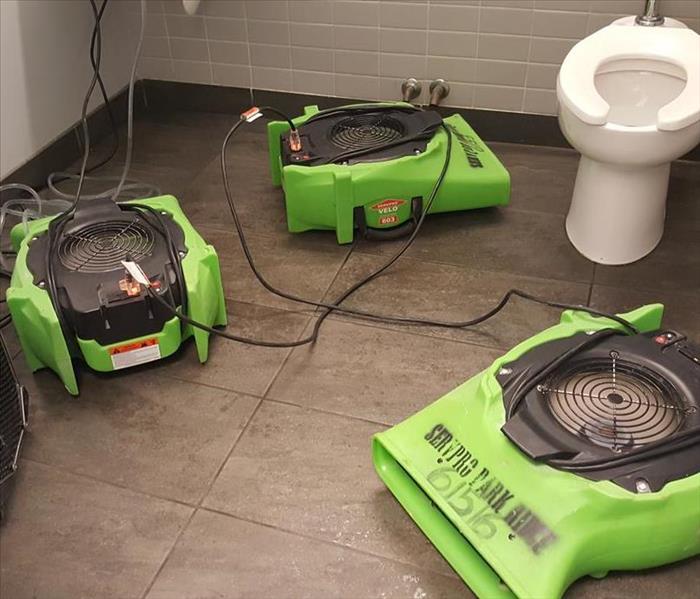 Water damage cleanup after sewage backup in Chicago,IL
Water damage cleanup after sewage backup in Chicago,IL
Most people have to deal with a flooded toilet at some point. You press the handle, and the water rises, but instead of draining, it flows over the rim and onto your bathroom floor. Water from the toilet is most likely to be Category 3 water, which means it's highly contaminated. If your bathroom has sewer damage from an overflowing toilet, there are several steps you can take to mitigate the problem.
Assessing the Severity
If only a little water escapes and it doesn't contain fecal matter, you may be able to clean up the mess yourself. You will need to call a sewage company that specializes in water remediation, however, if certain factors are present:
- A large amount of standing water on the floor
- Wet, contaminated carpet
- Water damage on walls, floors or cabinets
Professional mitigation technicians have the tools and the knowledge to make sure all the excess water is extracted, and all sewer damage is remedied.
Unstopping the Toilet
In order to prevent the toilet from overflowing again, you can take care of the problem that caused it to do so. If you can use a plunger to get rid of the clog, that is ideal. If your efforts do not produce any results, however, you may need to enlist the help of a plumber.
Sanitizing the Bathroom
No matter how big or small the problem is, any instance of a flooded toilet requires that all the surfaces impacted by the water be sanitized. Whether you hire professionals to take care of the disinfection or you decide to do it yourself, gloves can be worn to protect hands from the contaminated water. A benefit of hiring specialists to clean up your bathroom is that they can do post-cleaning tests to make sure the area is thoroughly sanitized.
If the toilet in your home in Chicago,IL, overflows, you will likely need to hire professionals for the cleanup. They can assess the situation, mitigate the sewer damage and sanitize the room.
Can My Wet Carpet Be Saved?
8/14/2018 (Permalink)
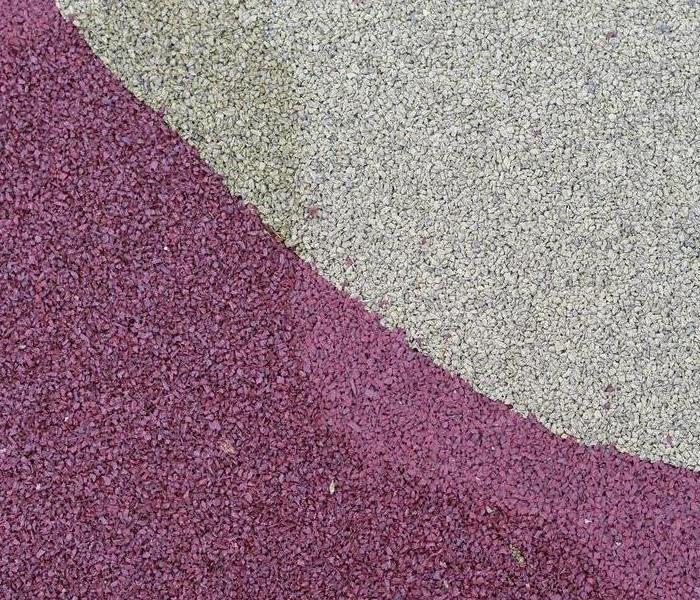 Carpet Water Loss in Chicago, IL
Carpet Water Loss in Chicago, IL
Can My Wet Carpet Be Saved?
Flooding at your home in Chicago, IL, can be overwhelming and confusing. What needs to be thrown away? What can be restored? For some contents of your home, the decision to keep or discard after a pipe break may appear cut and dry. When it comes to carpet, however, there are multiple factors that go into the decision.
To Save
Oftentimes, wet carpet can be saved when professionally dried and cleaned by a water restoration company. Follow the tips below to know when your carpeting can be rescued:
The source of the water is the most important factor when making this decision. If the water came from a clean source, like a pipe break or supply line, it is likely salvageable.
Consider the amount of time that the carpeting has been wet. Usually, less than 24-48 hours is a good rule of thumb. Mold can develop and spread quickly, so it is important to act fast.
Not To Save
In certain instances, water damage to the carpeting is irreparable. Know which situations necessitate taking it out with the trash:
If the source of the water is contaminated, such as from a sewage backup, the carpeting must be discarded for safety reasons. Black water contains viruses, bacteria and other microorganisms hazardous to your health.
Regardless of the type of water, carpet padding cannot usually be saved because it is so difficult to clean.
Carpeting that is under standing water or damp for more than 24-48 hours is at high risk for mold growth. Once mold is present, it should be replaced to avoid further problems.
Regardless of whether you choose to clean or replace your carpeting in Chicago, IL, it is critical to take immediate action. After a pipe break or other source of water damage, call a water restoration specialist and your homeowner’s insurance agency to begin the process of drying and restoring your home.
For more on Chicago click here.
Use These 5 Simple Steps To Flush a Water Heater
6/26/2018 (Permalink)
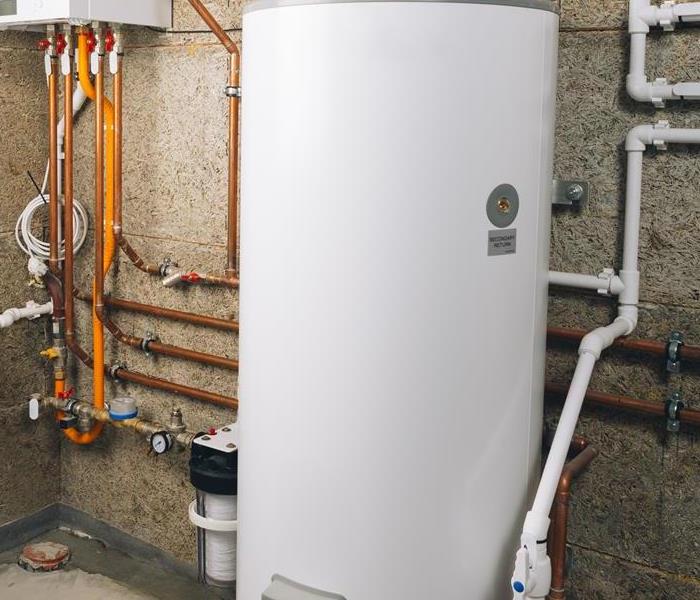 Water heater maintenance is key to reducing leaks or breaks.
Water heater maintenance is key to reducing leaks or breaks.
Water heaters can last a long time if properly maintained, but the appliances are often neglected. The old adage, "out of sight, out of mind" can be especially true of the water heater because it is often hidden away in a dark closet, basement, or garage in your home in Chicago. To prevent costly repairs or replacement of the unit, consider establishing a regular maintenance program. By taking the following steps, you can keep your home's hot water flowing for years to come.
1. Turn off the power or gas feeding the water heater. For a gas unit, simply make sure the pilot light is extinguished and no live electric lines feed into the tank. For an electric heater unit, turn all electrical lines off at the circuit breaker.
2. Screw a garden hose or drainage hose to the drain valve. Make sure the tubing is long enough to deposit water outside or into a tub. The water will almost certainly contain mineral-filled sediment, so draining the water outside is preferred.
3. Check the drain valve and move to the open position. The water should flow freely for several minutes; if it does not, call a water specialist to assess the situation. If the water begins flowing and then slows down, open a kitchen or bathroom hot water faucet. Wait for several minutes, and close the water supply valve. The water flow will eventually stop.
4. Close the drain valve after the water heater flush is completed. Turn the water supply line back on and watch the faucet’s flow to make sure the air is flushed out of the system entirely. Once the tank is completely full, the faucet water will flow smoothly with no air gushes.
5. Check again to make sure the water tank is full. Turn the gas or power back on. After restoring power, check the heating element to make sure it is working. Turn the kitchen or bathroom faucet off and enjoy your restored heater.
Regularly draining the water heater can help keep the hot water flowing. It can also save you money on tank repairs or replacement units.
For more on Chicago click here.
Why is flood water dangerous?
5/22/2018 (Permalink)
Flood water that hits from the outside can have all kinds of trouble contained within. Among the bad ingredients are raw sewage, pesticides,
fertilizers, viruses, petroleum products and many pieces of debris and garbage. People should not even touch flood water as it could be contaminated.
If there is standing water you should not touch it or walk into it because you may not know whether the water is covering a live electrical socket which could electrocute you if you touch the water.
In a serious flood situation, you should evacuate your home or business and call professionals to provide mitigation for your situation. A professional service has the expertise, the proper clothing and the equipment to get the job done, and you do not. Especially if you have a water in home or a water in business situation.
Salvaging the Contents of Your Business After It Floods
4/8/2018 (Permalink)
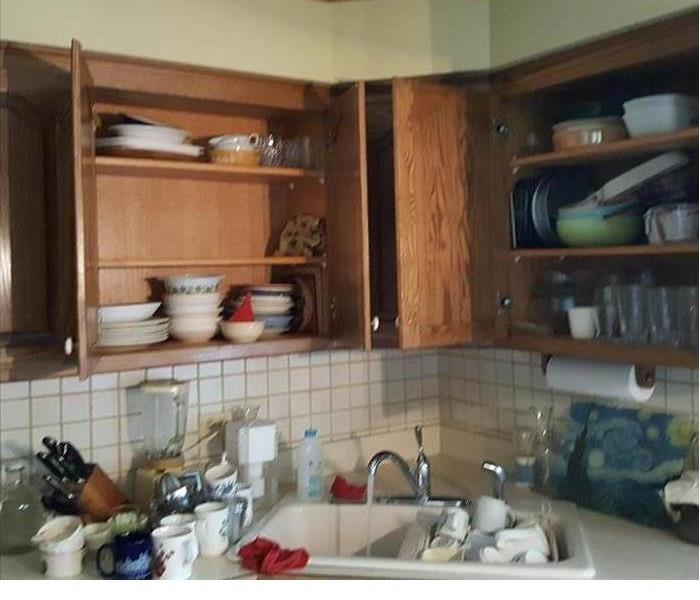 Salvaging Content after Water Loss
Salvaging Content after Water Loss
A broken pipe or a leak can cause significant water damage to your business in Park Ridge, IL. Water remediation specialists will likely handle the big job of saving the building where your flooded company resides, but what about all the items in the building? Electronics, furniture, documents and textiles may be salvageable if you get to them in time. As long as you take the right safety precautions, you may be surprised at how much you can save.
Safety First
Before you attempt to handle anything affected by the flood water, you must protect yourself. Protective equipment is necessary to keep germs and bacteria off your skin and out of your body:
• Rubber boots
• Waterproof rubber gloves
• Waterproof or water-repellent coveralls
• Face mask
• Goggles
Your flooded company is likely swimming with bacteria and other toxins that can be harmful to you if you ingest them, so make sure you are fully outfitted with protective gear before you start sorting items to save.
Electronics
Many modern electronic devices come equipped with measures to protect them against water damage. After wiping them down with an alcohol-based solution, use an apparatus that forces hot air in while forcing water vapor out.
Furniture and Textiles
First, take all furniture and textiles outside to remove mud and large bits of debris. Most furniture can be salvaged once completely dry. Dry cleaning is generally effective in sanitizing fabrics such as curtains.
Documents
Paper can be damaged just by being near flood water, as it increases humidity. Lay out waterlogged papers on an absorbent paper product, such as plain paper towels. This can help draw the water out of the pages.
Just because items have water damage, that does not automatically mean they are lost completely. If you follow these tips, you might be able to save more of the contents of your flooded company in Park Ridge, IL, than you thought possible.
Visit us at http://www.SERVPROparkridge.com for more information.
3 Effects of Secondary Damage After Flooding
3/22/2018 (Permalink)
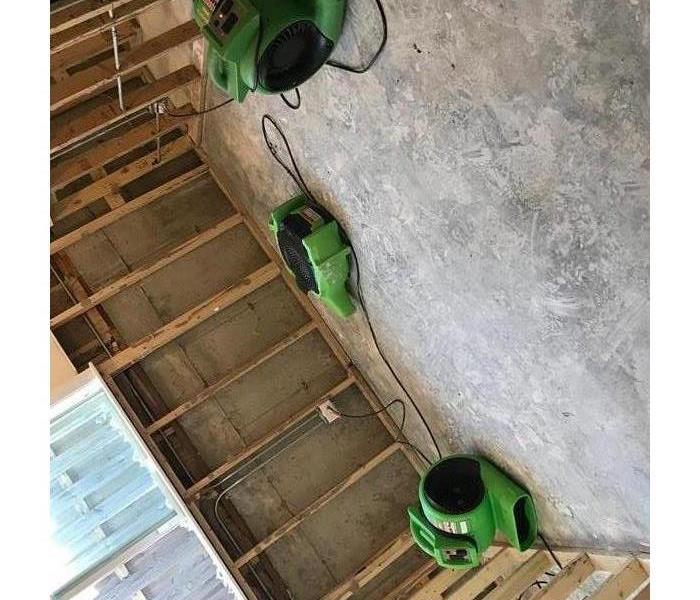 Water Loss in IL Home
Water Loss in IL Home
When flood waters rise, they can do a great deal of damage to your Park Ridge, IL, home. However, the presence of water may not be the only issue caused by flooding. Black mold, saturated belongings and damaged electrical systems that prevent you from running fans or your air conditioner to battle humidity can also impede cleanup and drying efforts. This secondary damage can have long-term effects on your home, so knowing how to handle it can be an important step in making repairs after a flood.
1. Damp Air Can Saturate Items
After a flood, water evaporation indoors can cause high humidity that makes drying out rooms and their contents a challenge. Because of the warm, damp air, items that were not affected directly by flood waters may become damp or feel moist. Wooden furniture can be especially vulnerable, as humidity can contribute to warping or discoloration. Having a professional storm cleanup and restoration crew come in to lower humidity with specialized machinery can prevent further damage to your belongings.
2. Mold Can Grow Quickly
After a flood, black mold can begin to develop on affected surfaces as soon as 24 hours later. This type of mold can be difficult to treat once it starts to spread. High humidity levels can also encourage mold growth, so drying out rooms as soon as possible may help you control and impede this issue once flood waters recede.
3. Surfaces May Soak Up Contaminated Water
The longer flood waters remain in your home, the better the chance that your floors, walls and furniture may soak up contaminated water. Not only may this water contain dangerous pathogens, it may cause the room to retain an unpleasant odor. Having the water removed as soon as possible and having a storm restoration company deodorize your home can prevent these bad odors from lingering.
Black mold, unpleasant odors and other issues caused by flooding in your Park Ridge, IL, can have far-reaching effects on your home. However, mitigation services and acting quickly might help you reduce the damage.
Visit us at http://www.SERVPROparkridge.com for more information.
3 Steps to Take After a Pipe Bursts
1/31/2018 (Permalink)
Bursting pipes can cause significant water damage in Chicago, IL. Not only do homeowners need to fix a broken pipe, but you must also worry about salvaging belongings and preventing potential mold. Luckily, you can restore your home in as few as three easy steps:
1. Turn off the water
2. Call a cleanup company
3. Fix the pipe
That’s it! Pretty soon, that flooded room can be a distant memory. Here’s some further insight into each step.
1. Turn Off the Water
Before you can fix the damage, you must stop the water from coming through the pipe. In some cases, you can accomplish this by turning off the valve for the specific pipe. However, some bursting pipes require you to turn off the main water supply to the home. If the water is near any electrical outlets, you may want to cut off the power for that part of the house as well.
2. Call a Cleanup Company
Water damage from a broken pipe can cause all kinds of trouble if you don’t remove it properly. First, the water itself can cause floors and walls to become structurally unsound. However, even if you remove the standing water quickly, secondary problems, such as black mold, can cause trouble.
Mold grows because of the humidity in the room, so it can affect any part of the area, even if it looks like the water never touched it. That’s why it is important to call a professional company to restore your home.
3. Fix the Pipe
With the water out of the way, you can assess the damage and fix the broken pipe. For small breaks, you may be able to fix it yourself. However, more complex cases may require a plumber’s expertise.
Bursting pipes can cause all kinds of trouble and water damage in Chicago, IL. Expedite the cleanup and repair process with these three steps. Visit http://www.SERVPROparkridge.com for more information on water damage.
Confronting Water Damage In The Home
8/29/2017 (Permalink)
Confronting Water Damage In The Home
Flooding is one of the most common forms of water damage in a business or home. The mere sight of a water flooded home can be paralyzing. After all, all of your personal belongings and memories reside within that home. Seeing it threatened by water in the home can temporarily make it very difficult to know what to do. Thankfully, water damage can be contained at first until a professional restoration team can arrive in the home.
Causes of water damage
Water damage has an almost endless list of causes. Natural flooding, a pipe break, a supply line break, broken appliances such as dishwashers, plumbing issues, and more can all cause water in the home. Water in a business can be caused by many of these same problems. Without prompt action, water damage can be extremely expensive. Some estimates can be thousands of dollars to repair, so it's imperative to get a restoration team on the scene as soon as possible so that drying can begin quickly. The sooner drying begins, the sooner the damage will be minimized.
Flood damage can be especially costly because it is not "clean" water like from a dishwasher. Dirty flood damage can mean losing many of the prized possessions in a home, so if the water that is causing a flooded home is dirty or has chemicals in it, it's natural to want an emergency response to the situation. Mitigation, water cleanup, and restoration are all best started as soon as possible. Supply line breaks and pipe breaks require a different course of action than other forms of water flow that have already stopped.
While waiting for restoration professionals
There's no need to leave the scene as-is if there's something that can possibly be done to reduce the damage while waiting for mitigation crews to arrive. While it's never a good idea to go near electrical outlets or appliances when there is water in the home, in some cases you can remove unaffected objects and save them from suffering from the water in the home.
Mitigation is the process of preventing further damage from a flooded home and then implementing the process of water cleanup afterwards. Basically, professionals are there to mitigate between the flooded home and the damage it faces. While waiting for professionals, you can begin mitigation in simple ways, such as removing unaffected items from a floor or mopping in places where there is no electrical currents. Depending on how bad the flood damage is already, it may not be wise to do this. For example, if there is a foot of standing water in the entire kitchen, go to a room or place where something might be salvageable. Never risk safety to do any of these things. Professionals will immediately begin preventing further damage through mitigation as soon as they arrive. To reduce flood damage, it's advisable to begin drying rooms by turning on a central air unit. This won't even begin to complete the extent of drying needed, but it's a small start toward water cleanup. A restoration company will continue when they arrive.
Welcome the restoration company
Anyone who has ever suffered flood damage knows the relief that you feel when a cleanup crew arrives. They have industrial dryers, air movers, and air blowers that accomplish things you simply can't with your limited tools. Whether your damage is coming from a supply line break, a pipe break, or an actual natural flood, you're going to appreciate seeing industrial drying equipment that can quickly dry your possessions and make restoration possible.
Water cleanup begins with inspecting the area and determining a course of action by the restoration company. Water in a business will be inspected in just the same way, though water in a business might have a different source. If the reason for the flooding is because of something like a supply line break or a pipe break, there will be a different course of action to prevent further damage. If it's from a flood that has passed, assessing damage and beginning cleanup and drying is possible. A restoration company is always going to be more efficient at cleanup, mitigation, and restoration than anything a novice could possibly do for water in a home or water in a business.
Visit http://www.SERVPROparkridge.com for more information on water damage.
Overview of Vital Water Damage Mitigation
6/26/2017 (Permalink)
Overview of Vital Water Damage Mitigation
A residential or commercial property owner must have reliable, reputable professional assistance in the aftermath of flood damage, or some other type of similar event. When seeking a reputable water damage mitigation specialists, there are a number of key factors that a home or business owner must bear in mind. In addition, a home or business owner is best served by considering these factors, and identifying appropriate service providers before the need for emergency water mediation services exist.
Remediating Water in Home
When a person faces water in home because of a flood, or some other reason, he or she best remediates the situation by immediately calling upon a professional. The reality is that there are experts who have specific experience in addressing water damage, mitigation, and restoration in a residential environment. These professionals understand the unique needs of addressing water in home issues.
A key element to bear in mind when seeking a water in home recovery specialist is emergency response. A home owner must be able to access a water and flood damage specialist that can be at a residence immediately.
Remediating Water in Business
The reality is that dealing with water in business differs significantly from addressing water in home. A business owner manager must have access to a water in business professional with specific expertise in water cleanup, restoration, and mitigation in a commercial setting.
Not only does water in business present truly unique challenges, time truly is of the essence. As is the case with residential water damage restoration, a business must be able to get immediate emergency response when flooding, or some other type of water damage, occurs. However, a business oftentimes is unable to operate in the aftermath of a flood until the aftermath is remedied. Therefore, a business must have professional assistance with a proven track record for rapid drying, water cleanup, mitigation, and restoration.
Comprehensive Drying
A key to limiting the extent of flood-related damage is comprehensive and thorough drying. With this in mind, not only must the premises themselves be thoroughly dried, by personal or business property maintained in the premises must be promptly and completely dried as well.
When seeking a water recovery specialist, attention must be paid to the type of equipment a professional service provider utilizes in the drying process. In addition, a consideration must be made of the experience and background of the water damage specialist that will oversee the drying process.
Restoration Services
Not all flood damage recovery specialists are created equally. For example, there are professionals that are well-equipped to address water cleanup and mitigation. However, they may not have the background necessary to appropriate address restorative efforts.
Ideally, a water recovery professional can provide comprehensive services, that include full-scale recovery efforts. By engaging a professional that can provide comprehensive services, a home or business owner is in the best position to ensure an effective and efficient water recovery effort.
Flood Damage Specialists
A key consideration when seeking professional assistance for everything from water cleanup to restoration is the background and experience of the team of professionals assigned to a project. A home or business owner needs to select a service provider with a team of specialists that are duly licensed, certified, insured and bonded.
Price Comparisons
There can be considerable disparity when it comes to comprehensive water and flood recovery services. By taking a proactive stance, and becoming familiar with service providers before an emergency occurs, a home or business owner is the best position to have access to a remediation expert at a reasonable price, should the need arise. The time for price shopping is not after a water event occurs and a property is facing significant damage.
Visit http://www.SERVPROparkridge.com for more information on water damage.
Water Damage Restoration
4/25/2017 (Permalink)
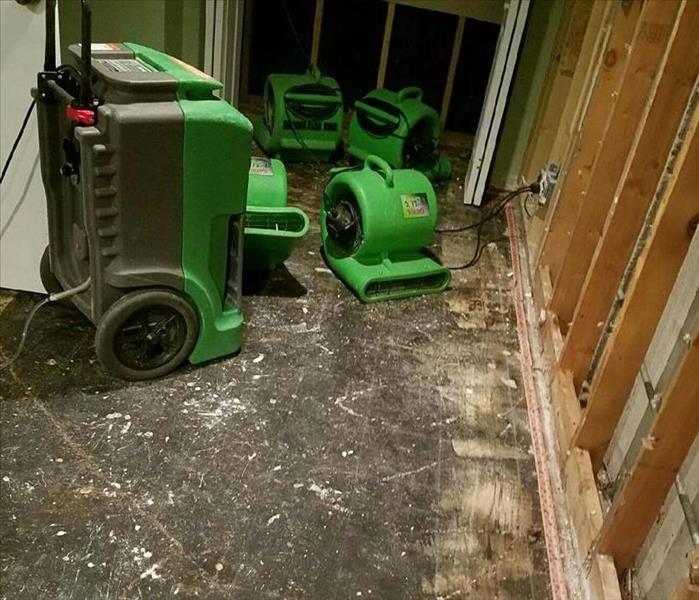 Water Damage
Water Damage
Water Damage Restoration
Water damage does not only occur as a result of flood damage. In fact, it is the small leaks we underestimate, which lead to most water in home or water in business cases. Therefore, it is important that we contract professional plumbers immediately we notice small leaks. However, if we have taken every water damage mitigation measure, yet water in home and water in business occur, all we can do is mitigation of water damage.
Here are some tips for flood damage and water damage restoration. Shut Water and Electricity Mainlines It is a no-brainer that water and water and electricity do not mix. If they do, you could be electrocuted and could even die. Therefore, you need to immediately shut off power from the main switch. While doing so, ensure that you are stepping on dry ground and that your hands are dry. And, also make a point of unplugging any electrical, which might be plugged to sockets reached by water.
After you have shut off power, now find your water mainline and shut it. If the water damage is a due to a plumbing issue, you can stop the flow by shutting water from the mainline. Salvaging Items Once you have shut of the water mainline to ensure that water in business or water in home is no longer flowing and that electrical danger is avoided, you can now start salvaging the items. First move items that have been affected by the flood damage or water damage. Take them where there is a lot of air movement.
The air movement will help in drying this items quickly. After you have handled the wet items, now remove items that might be reached by water and take them to a higher ground. Water Cleanup Once you have salvaged the dry items and taken wet items to an airy area, for drying, you can now start the cleanup process.
Start drying the water. Dry as much water as you can, therefore, the mitigation of secondary damage. From there, all that is left to do is call a water cleanup expert. They have the right equipment to identify any cranny that has moisture. Calling a water cleanup pro to dry water in home or water in business will ensure mitigation of mold growth.
An environmental hygienist should be able to check the air movement and determine whether it could foster the growth of these pathogens. This is a very important step in water damage restoration. Claiming Once drying, water cleanup and air movement has been handled, you now need to start making claims for the water damage restoration. Ensure that you have document all you can. Use photos and videos to evidence that there indeed was a water damage. Also keep receipts to evidence water damage restoration.
It is also important that you keep contact of the water restoration professional that you hired. This will be very important when it comes to compensating you for flood damage or water damage. Visit http://www.SERVPROparkridge.com for more information on water damage.
The Business of Water Removal and Restoration
4/25/2017 (Permalink)
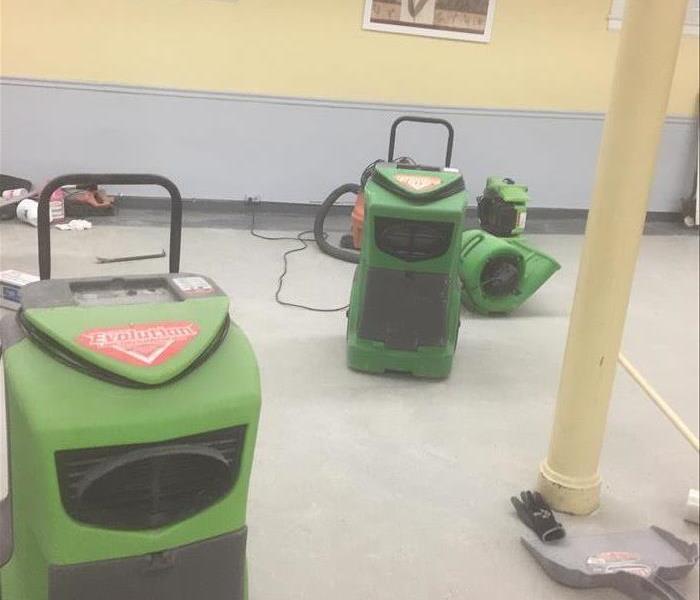 Water Damage Cleanup
Water Damage Cleanup
The Business of Water Removal and Restoration
Professionals in the water cleanup world have that helps them to find moisture that's far from plain site. Water damage restoration contributes to reducing moisture and removing water in your home after flood damage and other types of water damage. Here is how a water damage restoration specialist can help you remove water in a business or water in a home.
Checking Out the Damage
The water cleanup process will start with an assessment of the water damage. It is likely that everything will need to be removed from your home to allow for a complete water damage restoration. Flood damage can often leave moisture and water in a home that can be hazardous to your health. The moist human conditions are breeding ground for mold. This mold can cause respiratory issues and have a pronounced effect on someone with asthma or other respiratory diseases.
Mitigation
The mitigation against this mold is a proper water cleanup followed by a thorough drying if needed. If flood damage has left deep water in your home, a water pump can be used to get the largest amount of water out. After that, a wet or dry vacuum can help get even more of the liquid gone. Once you are finished with the vacuum, continue to trying fight water damage by using a few high-powered fans. They will produce air movement that aids in the drying process.
A dehumidifier will continually remove moisture from the air while it's on. Water is in Business This air movement and drying is the key to keeping the mold out of your house. It is the same for water in a business setting. Moisture and water are in business if it is not made to dry and evaporate. This is the mitigation against the mold that's trying to grow in your home. The air movement and dehumidifier removes more moisture than any other option. A complete drying is the only way to combat water damage.
Before the Job is Done Once you have completely dried everything in you home to the best of your ability, you can start moving things back in. Don't bring back furniture that was soaked. The material holds bacteria very well and, even if it's now dry, it can still be harmful to you and your family. No water damage restoration is complete without a water cleanup and a thorough drying that includes high air movement. Flood damage and other types of water damage can turn your home into a mold farm. Seek mitigation against the mold by following all of these steps to stop mold growth in your home.
Visit http://www.SERVPROparkridge.com for more information on mold removal and remediation.
What to do if You Encounter a Water Loss
4/4/2017 (Permalink)
What to do if You Encounter a Water Loss
If you live in Park Ridge, Il and you have water damage or flood damage, there are certain steps you should take to protect the health of you and your family. Pipes can break, sewers can back up, and even flooding can occur. In Northern Illinois, near Chicago, there is a flood plain, and when some of the violent storms come through, floods can occur.
When the suburbs get built up, the storm sewers can become clogged with leaves and debris to the point where it backs up and causes all kinds of which gets very tiresome for residents. The biggest thing to remember that if you have any standing water in your building, whether it be water in home or water in business situation, you should leave it alone
as it can be dangerous.
Visit http://www.SERVPROparkridge.com for more information on water damage restoration.



 24/7 Emergency Service
24/7 Emergency Service




































